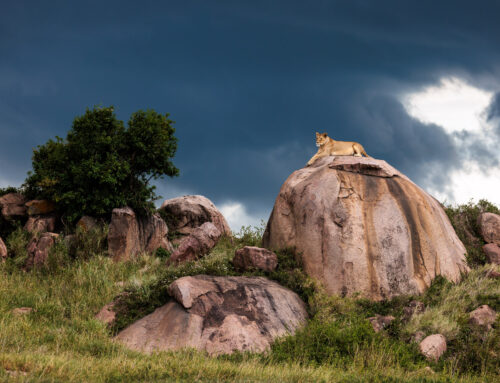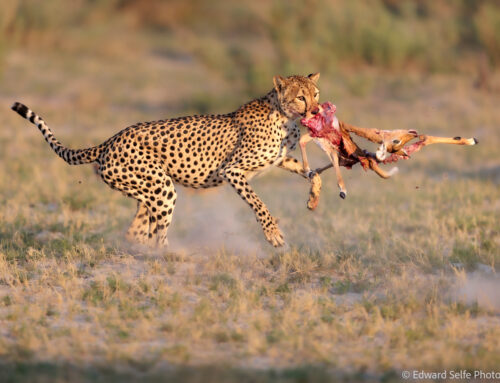I knew that my mid-July safari with Don & Kathy Marianos and Mark & Lynne Siegal would be a wonderful wildlife experience. And having guided Don & Kathy in 2017, I knew that we would have a lot of fun. I hadn’t anticipated quite how good the sightings would be, or quite how much fun we would have!
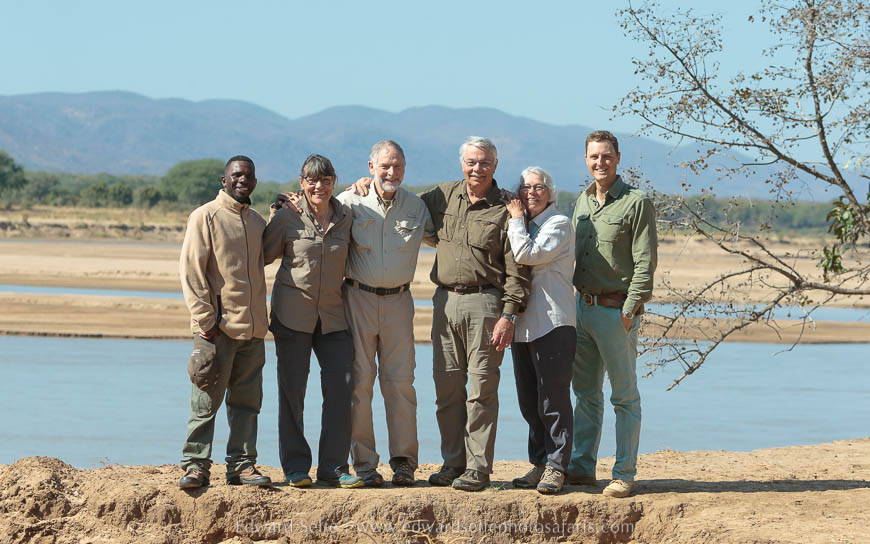
We had 14 nights in 4 camps, shared between Nsefu Camp (4), Lion Camp (4), Chindeni (4) and Chamilandu (2). These camps all offered a beautiful and authentic safari experience with stunning views, great food, superb hospitality and all the necessary amenities that photographic guests might need. Crucially, the trip was a superb itinerary for photographers, spending extended time in remote camps that give immediate access to the best game-viewing areas in the Luangwa. By being remote, we also enjoyed most of our sightings privately, occasionally joined by other vehicles. This is increasingly a luxury in the safari world but one which is important for photographers who want to sit and wait for events to unfold. As we found out, this is also key when carnivores are hunting and when there are leopard and lion cubs involved and disturbance must be minimised.
14 days is too long a safari to report the action in real time…! So I will run through the highlights – and there were many – rather than giving a daily account. While I prefer to go day-by-day (because it gives and idea of the rate at which sightings appear in the Luangwa) I hope you’ll see from the following report that there were very few quiet outings into the bush this last 2 weeks!
We started at Nsefu Camp, deep in the heart of the superb Nsefu Sector. We had hit a run of very unseasonal cloudy weather which made it very cold, and suppressed the great light that the Luangwa is known for in July. Nevertheless, we still enjoyed some interesting sightings, including finding Olimba (Nsefu’s famous leopardess) on our first evening. With very little light, we worked on panning shots, which was a priority for the group, and a technique that we continued to employ during the week.
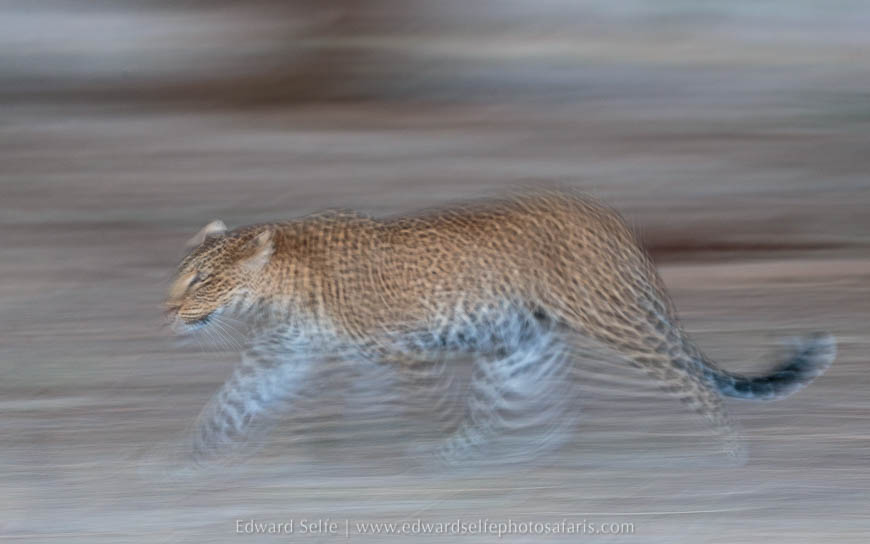
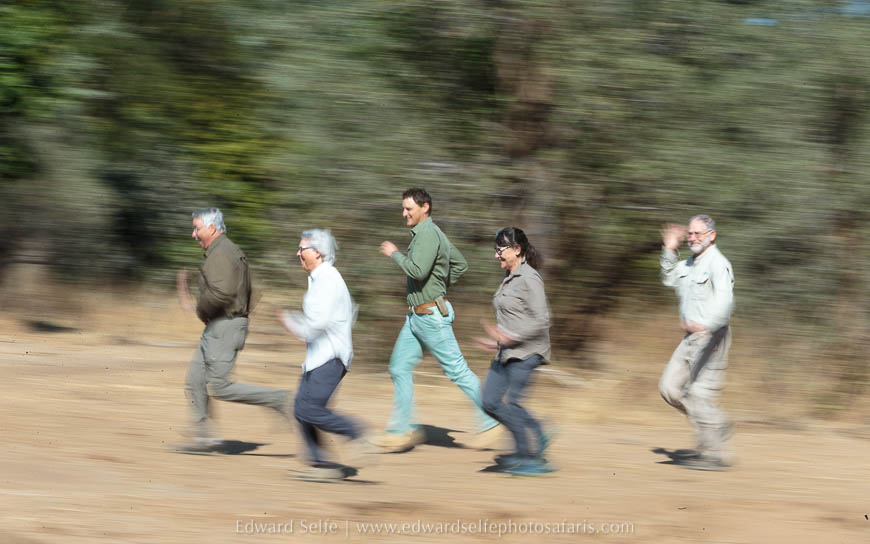
After a sunset with some hippos and momentary interesting light, we returned to Olimba and found her searching for something high in the branches of a tree. We knew she had a cub and hoped that she would reveal the youngster. Turned out that she was looking for a kill that she had stashed there earlier. I believe that she couldn’t find it because her grown-up cub – Chimwera – had been there during the day when Olimba was feeding her little cub, and stolen part of the meal! We were pretty happy to track down a leopard in a tree on our first evening!
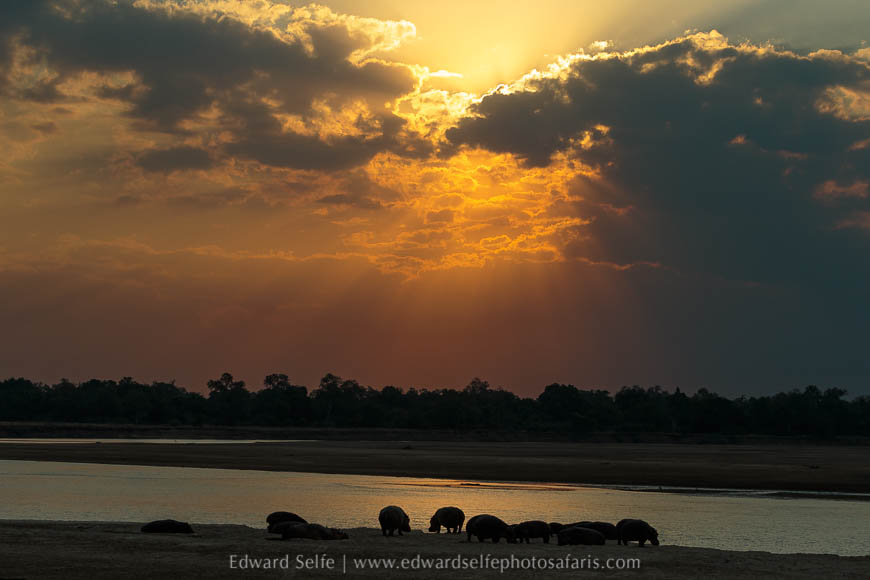
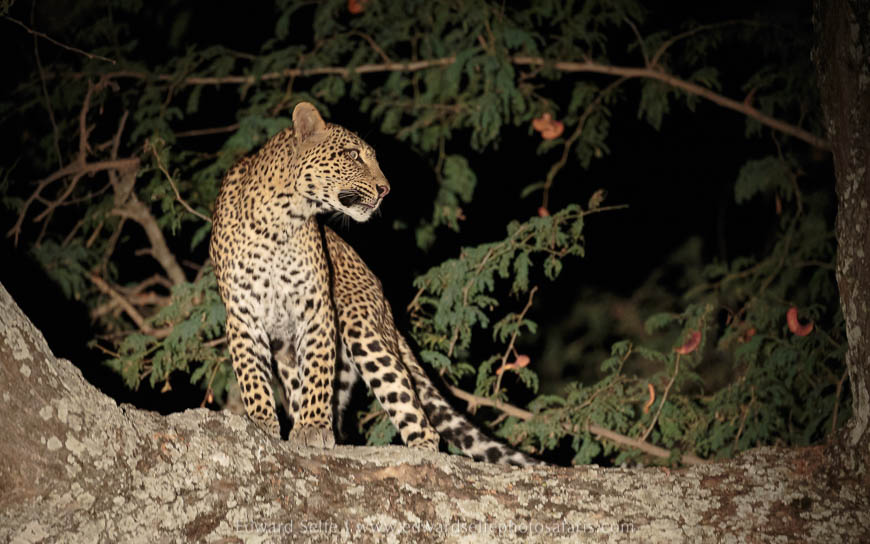
Each day we hoped that the light would improve, and for 4 days it did not! However, we worked on shapes, textures and animal-scapes, using the right sightings for these techniques. On the second morning, we tracked down a leopard near to camp, but she gave us only a brief showing before disappearing in to the bush!
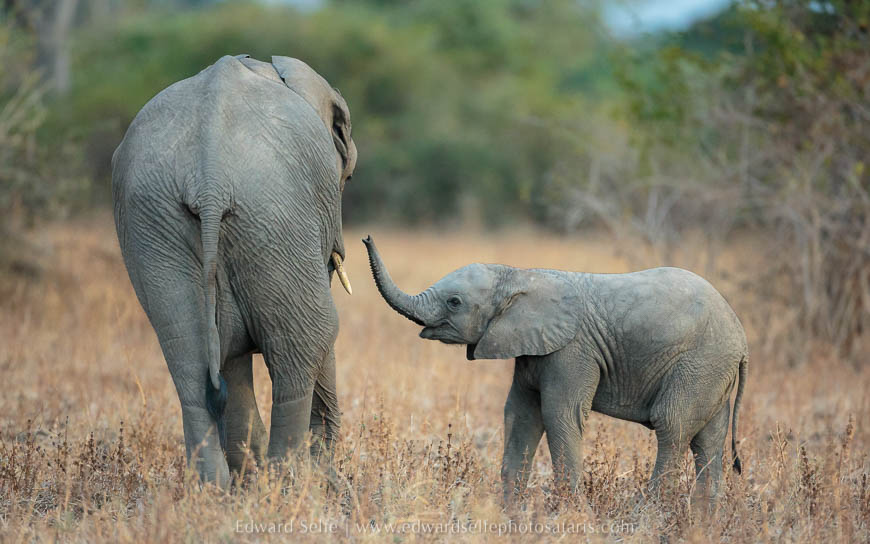
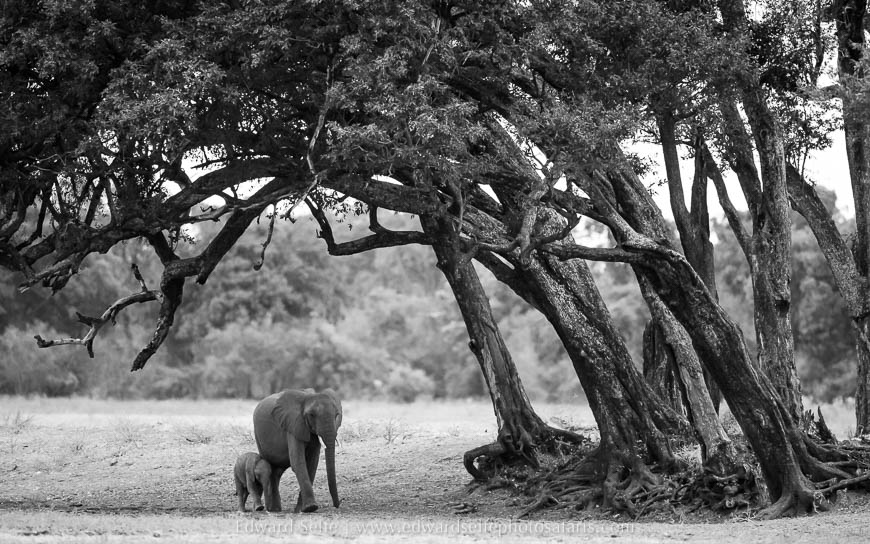
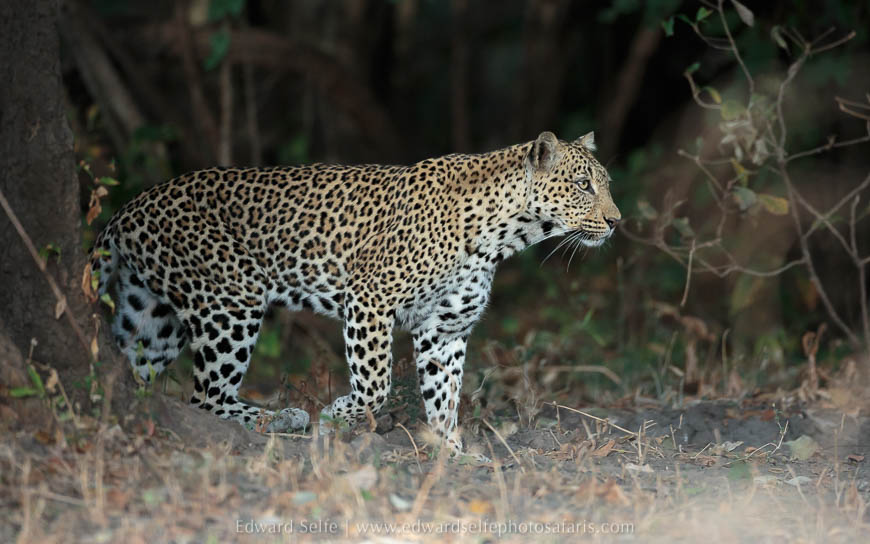
Once you’ve lived in the bush a long time, you learn that you really never know what is around the next corner. On a particularly cloudy morning, we stopped for a ‘nature break’ and I commented about the unseasonably cloudy day. As is often the way when we listen to the bush, almost immediately I heard an impala snort in alarm at the stork colony about 1km away, so we jumped back in the vehicle and headed over.
What followed was an hour of the most heart-racing action that I’ve known in the bush. And to add to it all, the cloudy weather was actually on our side, as the action occurred quite late in the morning when the light would have been very harsh…..it was all meant to be!
Knowing that a well-known leopard — which we call Olimba — likes to hunt in the gully underneath the Stork Colony, I could feel my heart racing as I drove my guests into the area. We looked around and were just in time to see a spotty rump disappearing around a bend in the channel and heading towards a herd of impalas either side of the rim. I explained that if we followed we would spook the antelope and reduce the leopard’s chances of a successful hunt, so we remained where we were, about 200m from the edge of the channel. We waited, with our cameras trained on the impalas, unable to see the leopard but knowing that she was in the gully below the antelope! To say this was exciting is an understatement.
Leopards get into this situation regularly, and I’ve seen it countless times. But there are a hundred ways in which such a hunt can fail. I was just beginning to hope that this one might be successful when an impala snorted his warning. My heart fell. I suspected that the game was up, so I began to look around and assess how best to get some photos of the leopard as she retreated back down the gulley to try her luck elsewhere.
But Olimba is a pro, and as the antelope on the right of the gully looked towards the sentinel who was snorting, she exploded from the channel and caught one of the impalas on the left! Don & Lynne, who had not taken their eyes from their cameras throughout, caught the action in the frame with a well-timed burst. While the action is far away, it’s all too clear to see how she made her kill! I am sure these images will appear on their report later! [Update: here are the images, shown sequentially to give a video clip!].
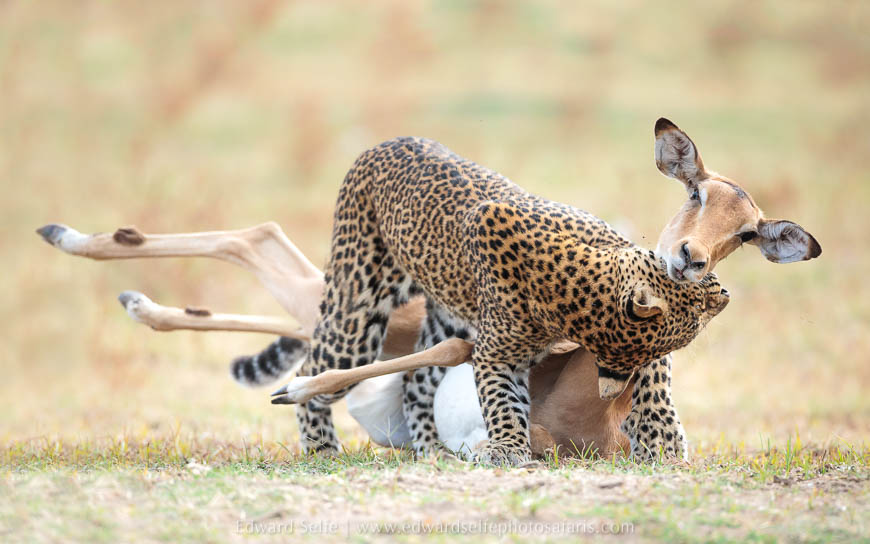
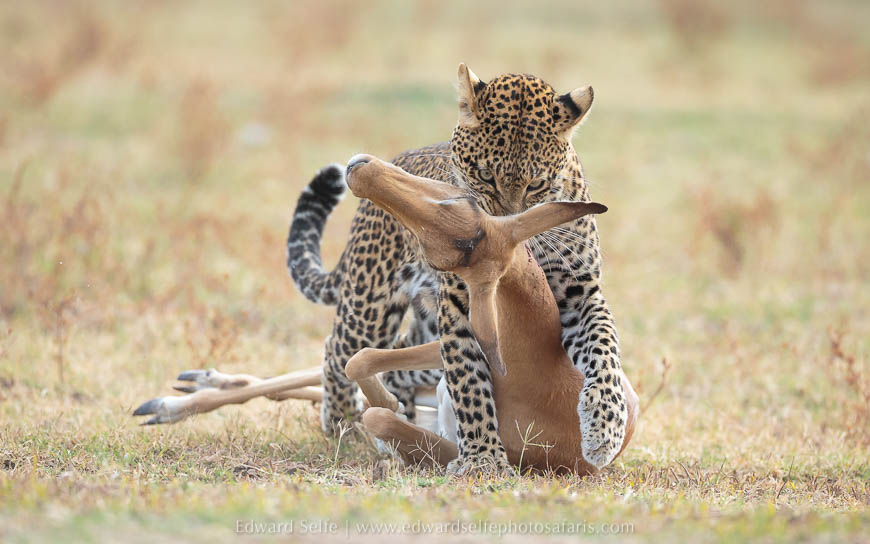
With the leopard on top of the impala, I moved forward cautiously and we arrived just 10 seconds after the ambush. The suffocation was still in process and I advised some simple camera adjustments and encouraged everyone to fire away! I knew that the leopard would want to bring the kill back into the channel so I parked opposite her (rather than on the same side) and waited. True enough, she dragged it towards us! The other antelope were standing and staring so I advised that everyone should zoom out and include the wider scene which turned out to give some of the best shots of the event.
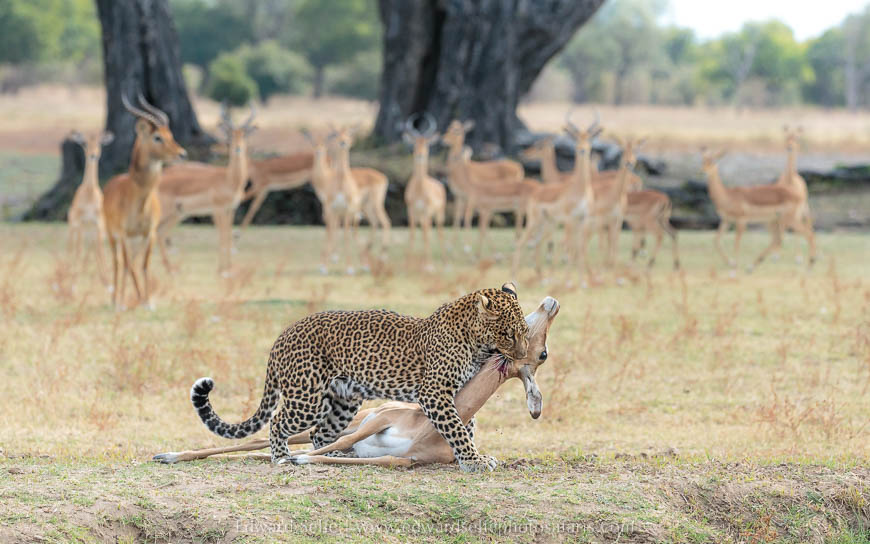
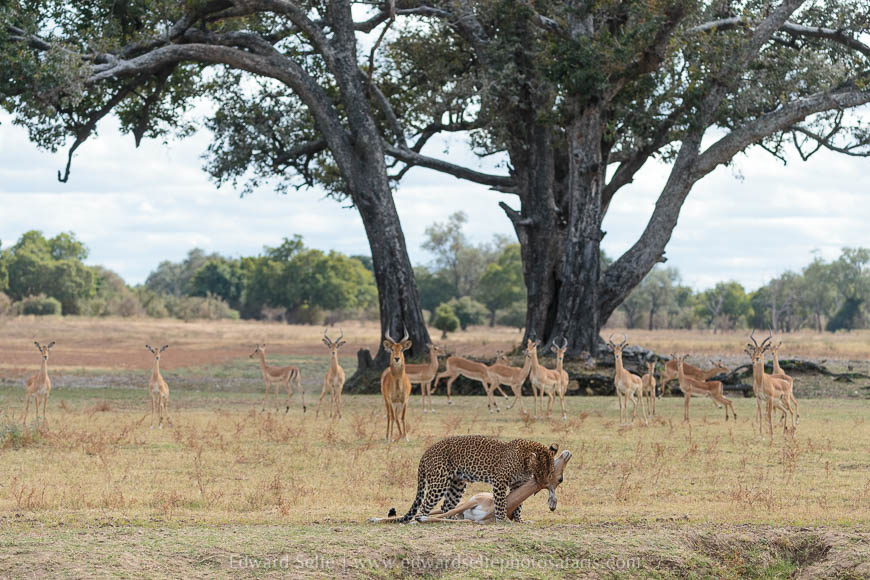
With the antelope in the channel once more, she could rest, hoping that the hyaenas had not heard the commotion. But her work was only just beginning. Over the next half hour, she dragged it along the channel, up across the plain and into some thickets nearby. We left her to rest while we went for restorative coffee! The last thing we wanted to do was to draw attention to her, knowing that she has a cub to feed and the hyaenas would make light work of her hard-earned prize.
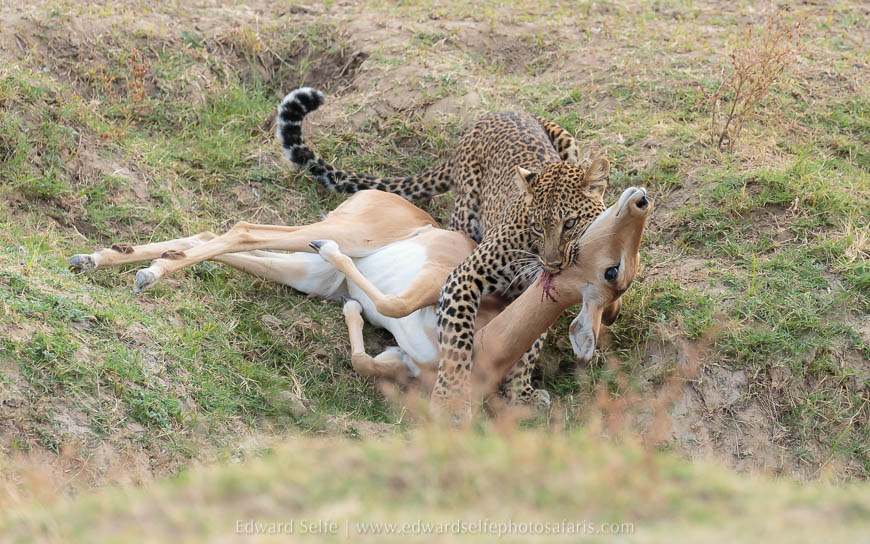
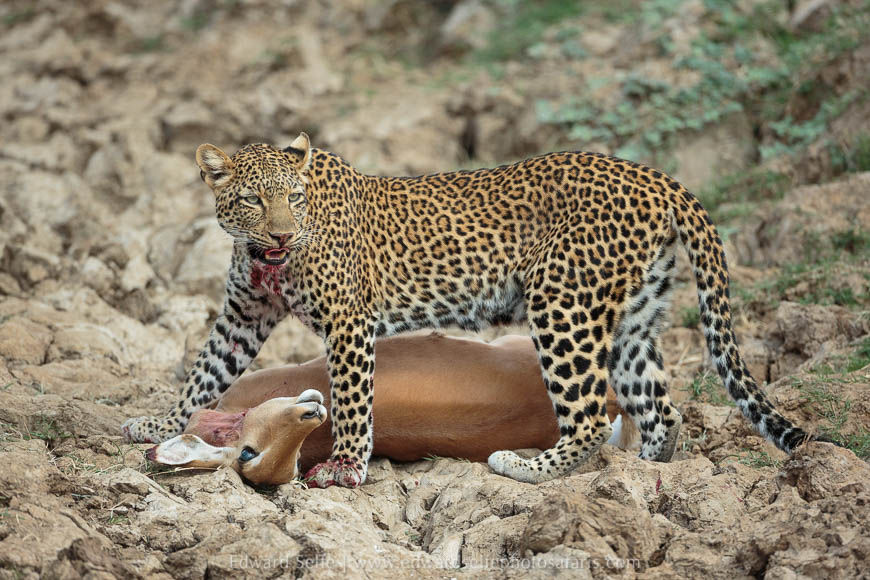
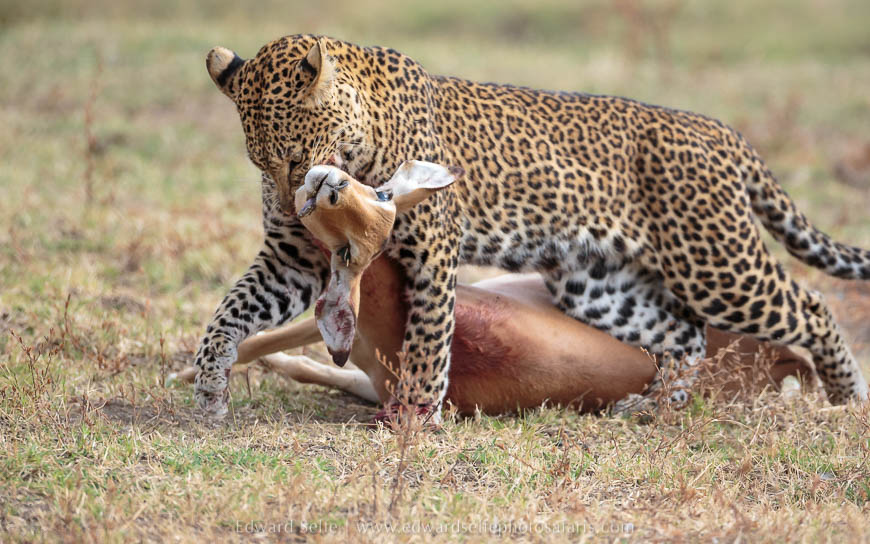
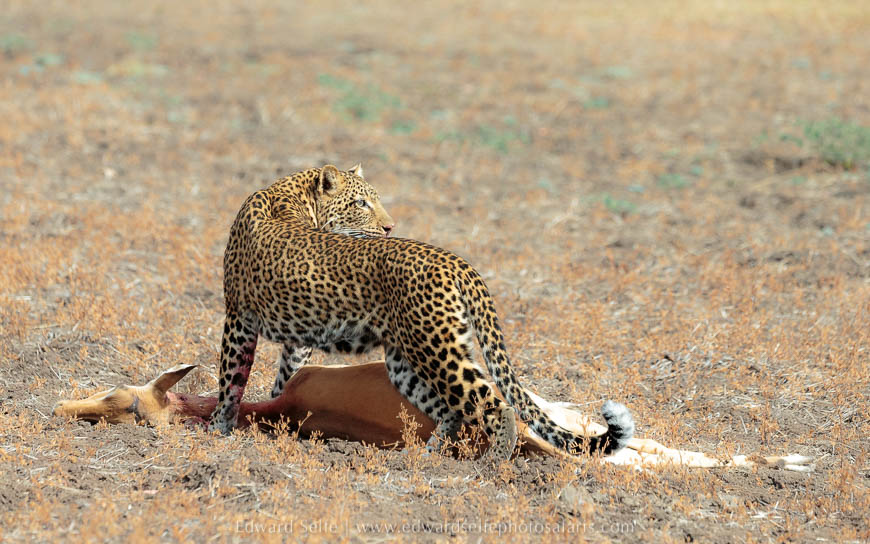
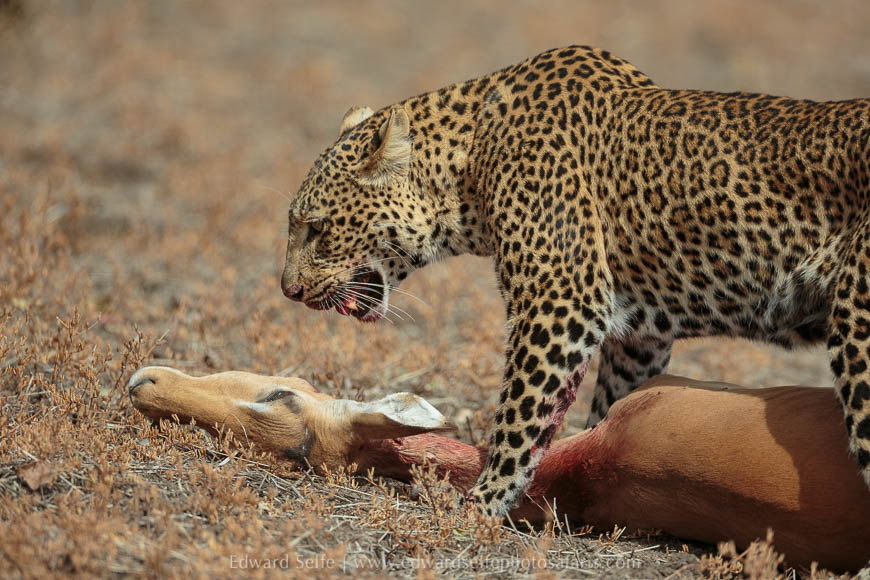
We talked about how she would have to lift the carcass into a tree to avoid the hyaenas stealing it and we hoped that she would bring the cub to feed. Preferring not to draw any more attention to the scene, we left her and decided to return only in the afternoon. The life of her cub hangs in the balance at its young age and we wanted to ensure that we caused as little disturbance as possible. We also considered the incredible sighting we had enjoyed. None of us enjoy watching the demise of any animal, but witnessing the way a supreme predator pits itself against an agile and athletic prey is something incredible and entirely natural.
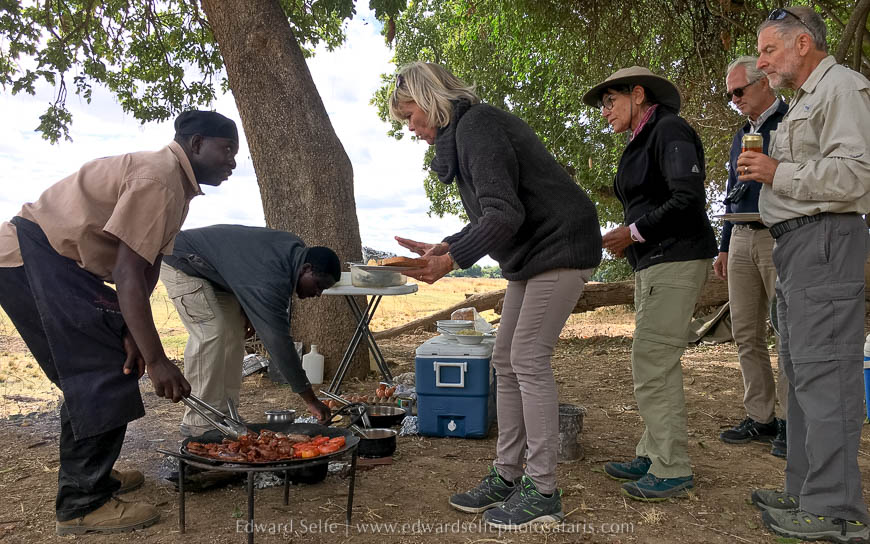
We returned in the afternoon and found her and her cub in a tree, and the carcass under a different bush. Why had she not dragged it into a tree?! We were dismayed as there were hyaenas all around and very quickly one walked into the bush and dragged away her prize…. She left the cub in the tree and followed the hyaena, watching as it devoured the whole carcass. Occasionally it would move a few yards and she would clear up the scraps. She can’t challenge the hyaena, which is twice her size, for fear of injury that would prevent her feeding her own cub. It was tough to watch her getting only the scraps of the kill she had worked so hard to procure.
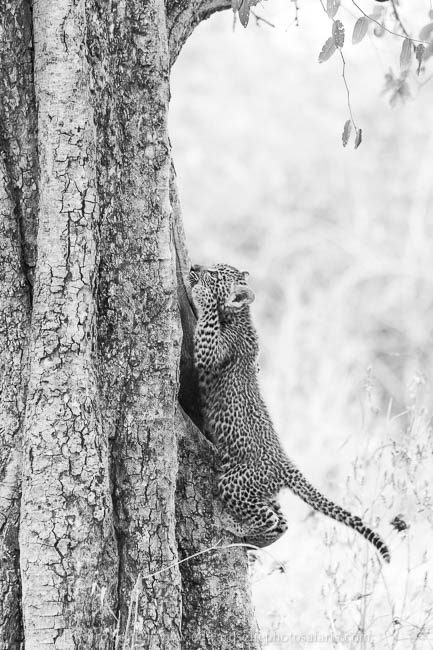
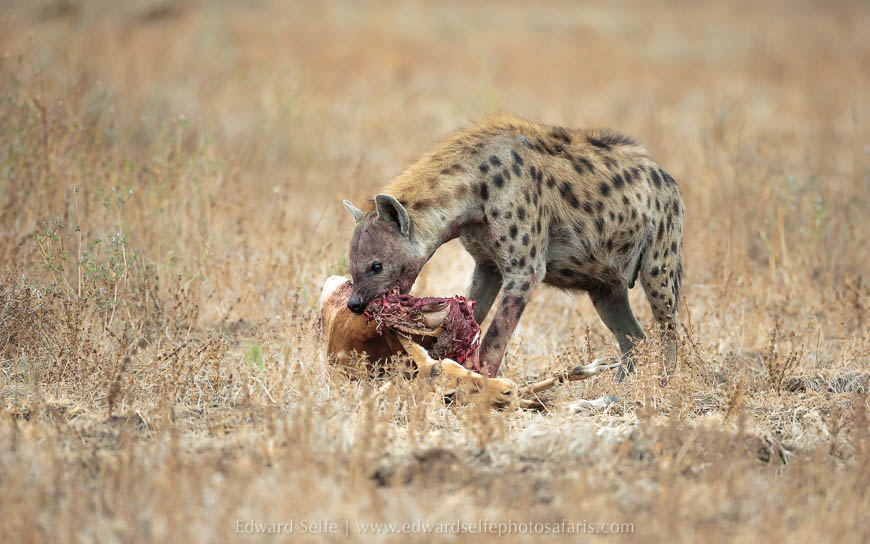
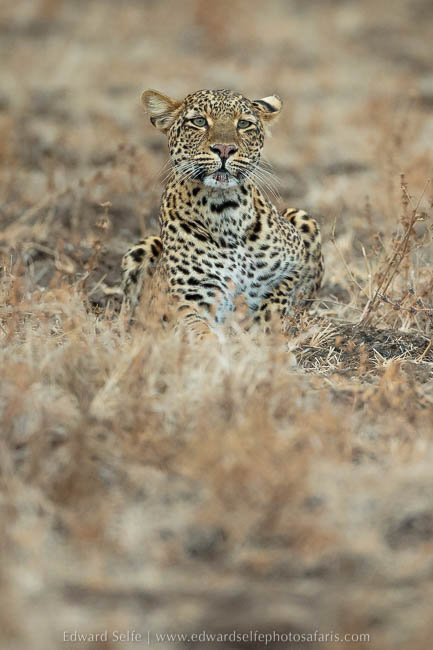
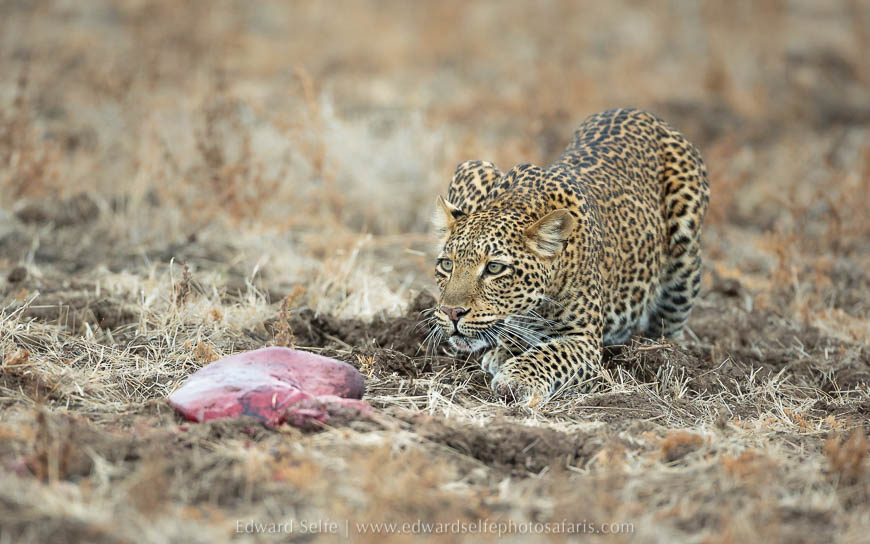
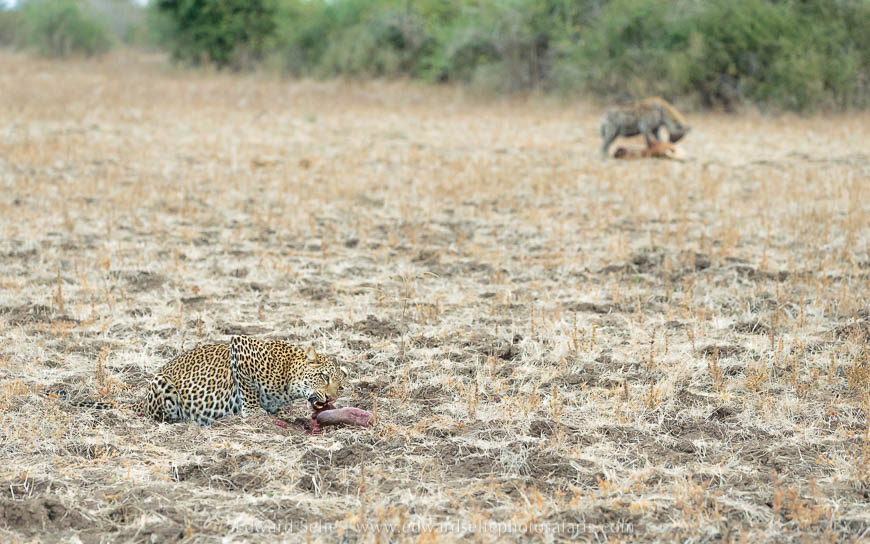
As a final insult, the sun came out that afternoon and bathed the disgruntled leopard in golden light. After some beautiful photos, we left the scene, wanting to make sure that we minimised disturbance in the night when the hyaenas would be most active and she would need to move her cub away from the area.
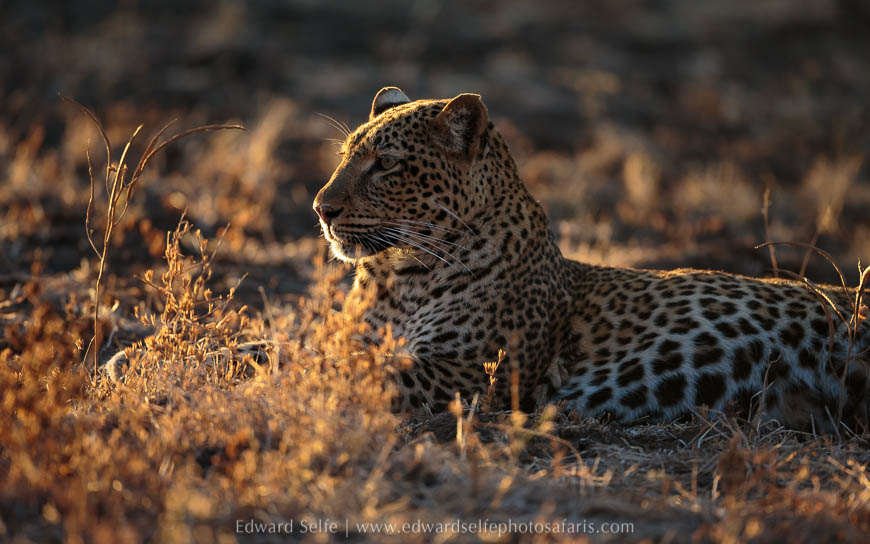
[When I shared this story, I had a number of responses from viewers questioning why we would enjoy watching such a scene. Here is the response I gave and I hope it’s useful to read:
Wildlife lovers and professionals get great pleasure from observing animal behaviour; the more unusual, intimate or exciting, the more interesting it is. This is the reason that we place higher value on mating, sparring, births, feeding, playing and youngsters than we do on standard, everyday behaviour.
Carnivores kill to survive, just as herbivores eat vegetation to survive. Being there at the moment an incredibly athletic predator pits itself against an equally athletic prey species is exciting and unusual to see. Given how rarely the predators succeed, it is all the more unusual.
There is no pleasure derived in the death of an animal, but in the observation of an incredible moment in the natural world. Of course the joy is that we know that this moment would have occurred whether we were there or not.
I don’t think there is any comparison with people dying (as some have mentioned) at all, since our world does not function in the same way as animals’ worlds. Furthermore human death is usually associated with sadness and negativity, rather than tempered with the promise of life for the predator (and her 4 month old cub in this case).
So this moment is to be celebrated as a rarely seen and rarely documented event, rather than because there is the death of an antelope. It would have been equally extraordinary to watch if the antelope had finally got away.
Everyone who watched this event was well aware of the loss of an antelope, but thrilled to have observed one of Nature’s special moments.
I hope this might give you some insight into why moments such as these are interesting to wildlife enthusiasts.]
[Back to the story.] We wondered how on earth we would top such a sighting and we resigned ourselves to the fact that we probably wouldn’t! But we started again the following morning, employing the same techniques that we always do; this quickly gave us a patrolling leopard who hopped into a tree to scout around, but then settled in some bushes.
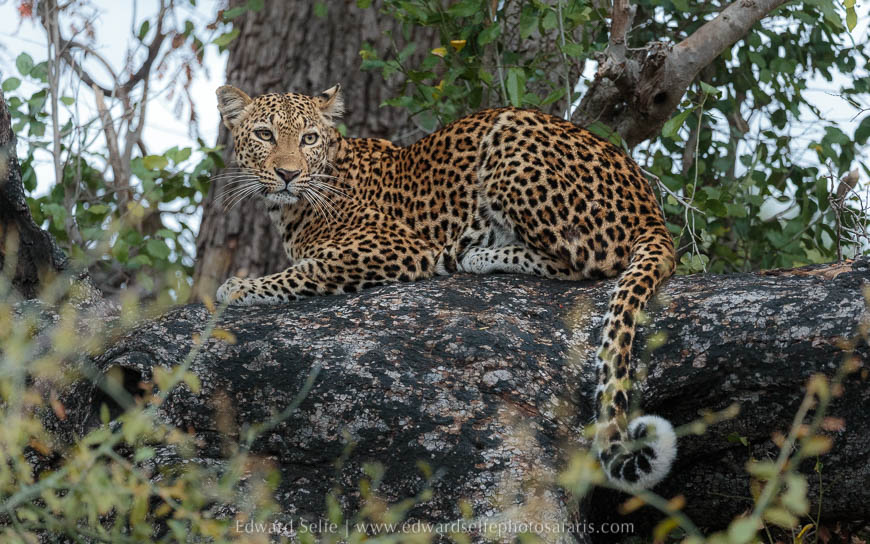
We moved on and spent a long time with some young giraffes whose sparring turned into a duel with some sickening thuds as they clattered their heads onto the bodies of their adversary. As always, it appears a ritualised dance until we consider the forces involved and that it’s their heads that deliver those forces!
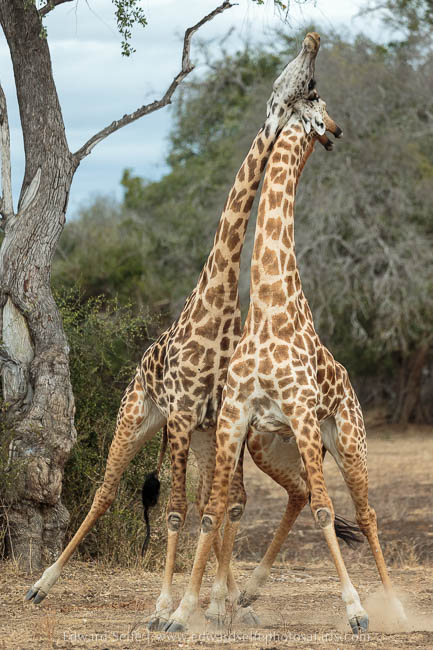
Late in the morning, we found a grumpy Olimba resting on a mound in search of prey in areas where there are fewer hyaenas. We left her in peace and moved on to check Mtanda Plain for signs of elephants but it was a pack of 14 wild dogs that we found resting in the shade of a large mound. They had clearly eaten, so we decided to return in the afternoon when they would surely hunt again.
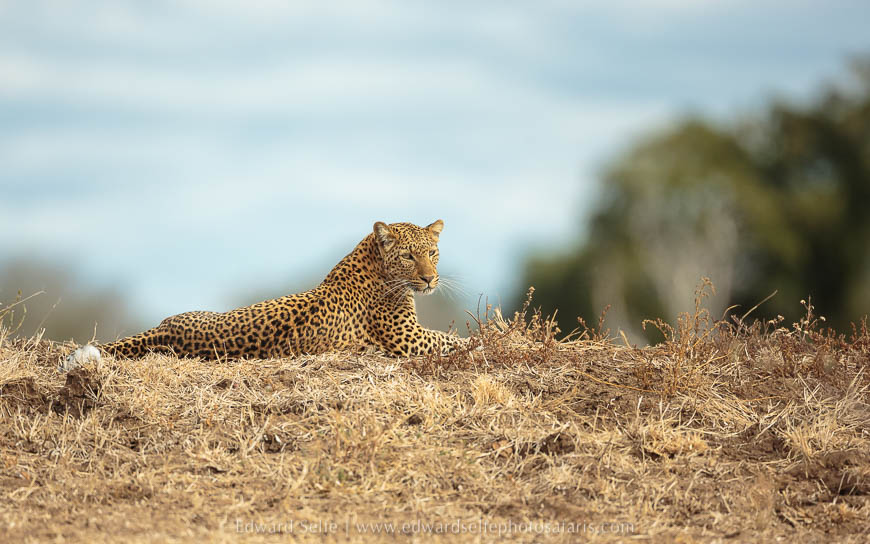
Indeed the dogs did hunt in the afternoon, but only after some excellent socialising and interaction. They stalked some antelope and chased one along the top of the river bank. We felt we would surely see them catch it, but in fact the antelope took to the water to escape….only to be hunted and killed by the numerous crocodiles in the river! Don had asked if we might see a crocodile kill only the previous day so we felt Nature was smiling on us this week!
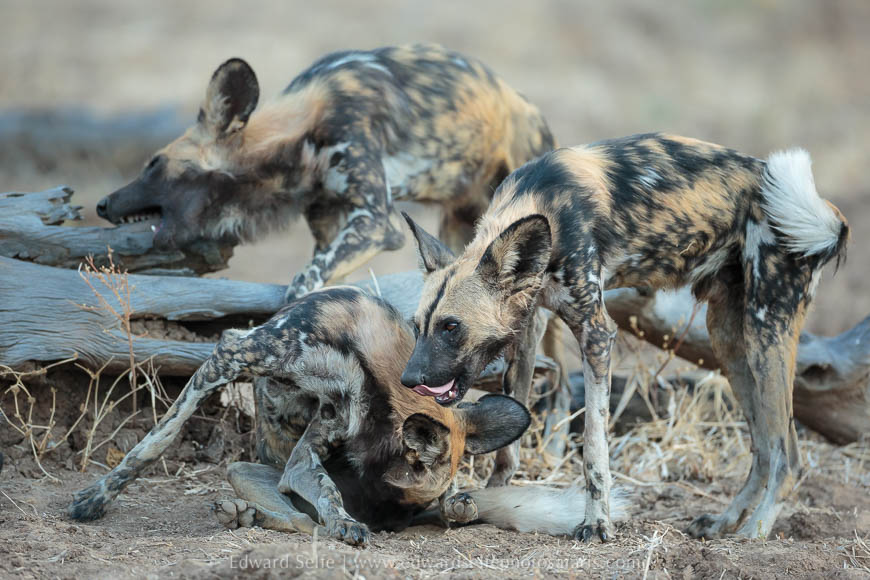
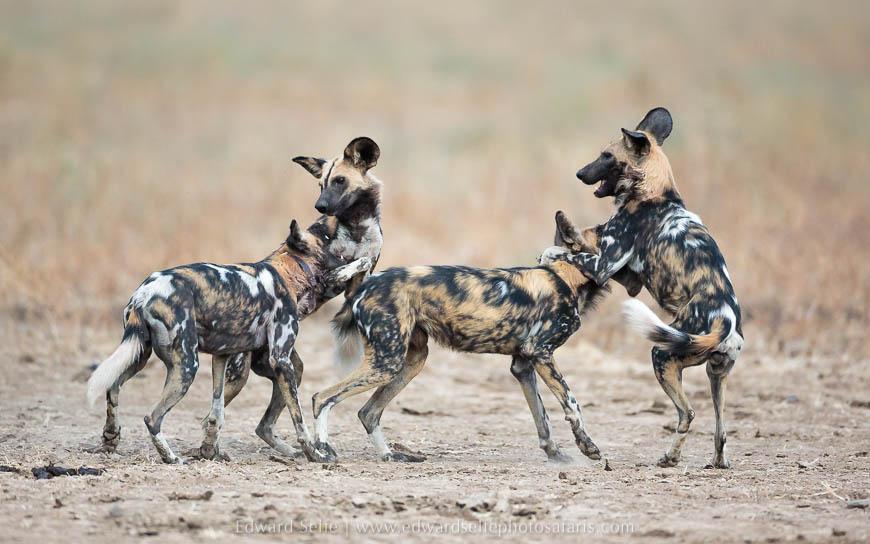
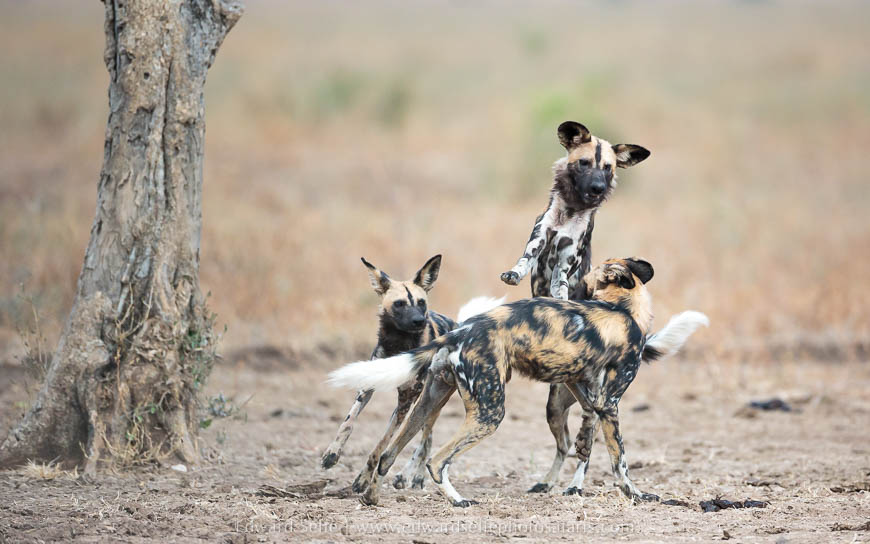
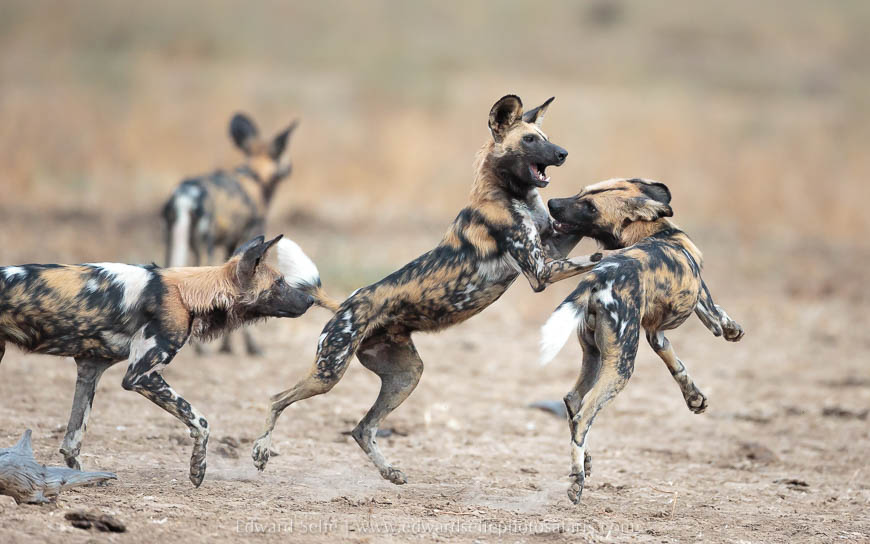
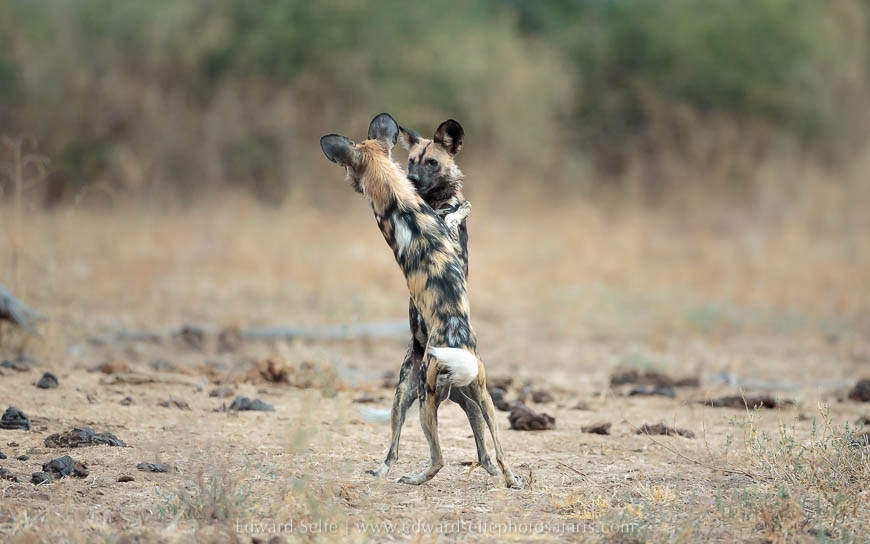
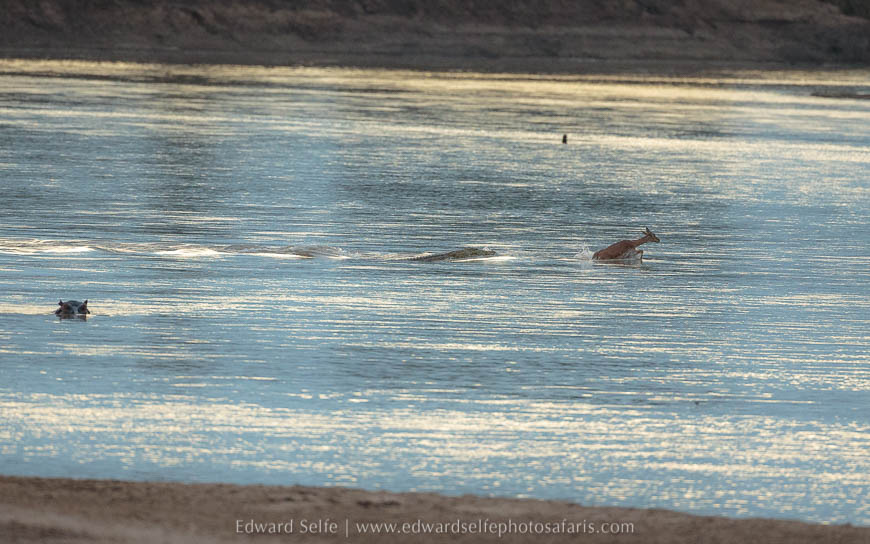
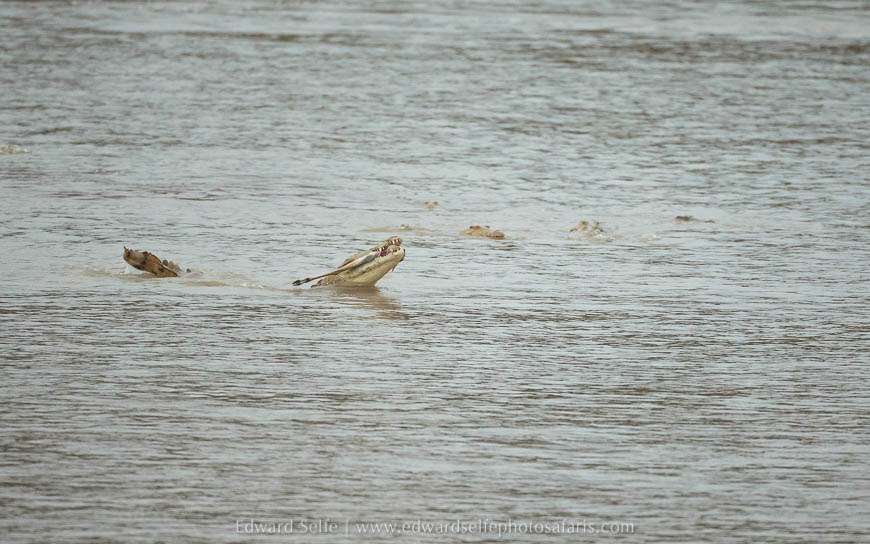
That was our last day in the Nsefu Sector, so we packed up ready to move to Lion Camp in the morning. As always with Lion Camp, we enjoyed the best lion sightings anywhere in the Valley, with 3 different prides, 7 different males and lots of interaction between them all! Our first morning gave us beautiful light – finally! – and a good sighting of the Hollywood pride who were resting on the shelf in sight of Lion Camp. We spent a couple of hours with them, parking in the bottom of the drainage channel below them, and enjoying their interactions.
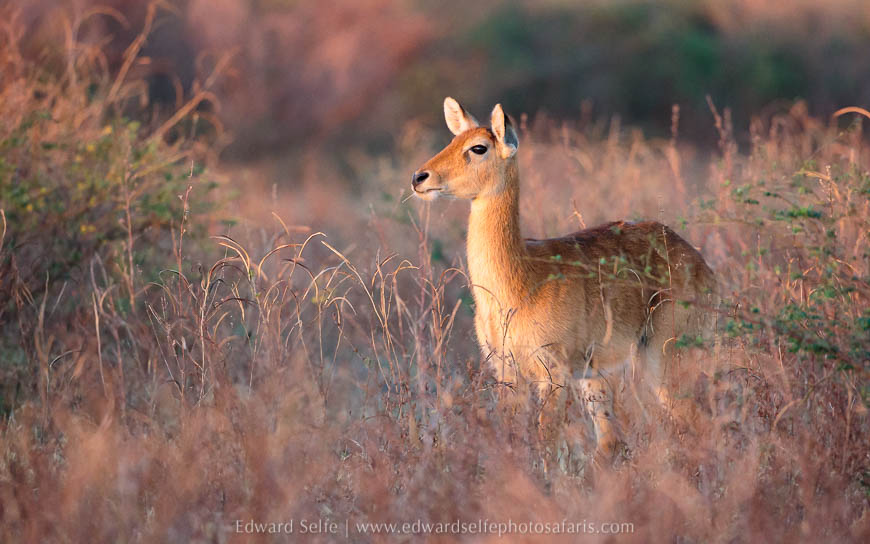
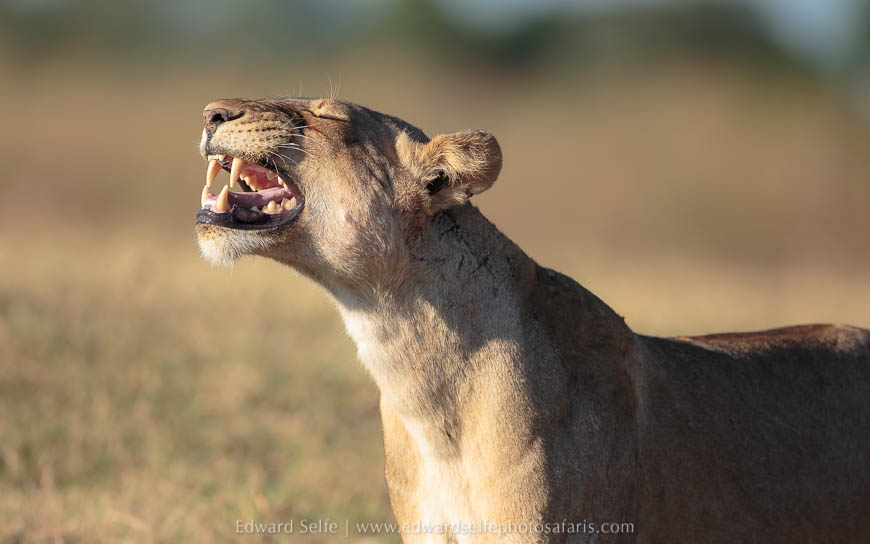
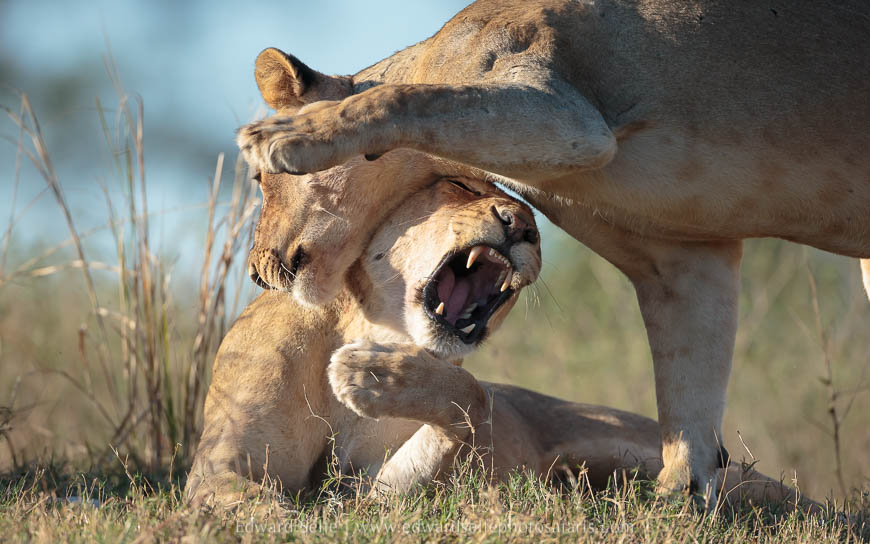
Moving on from there, we spent tea break with a group of bull elephants on Lion Plain framing shots between the leadwood trees and chatting about their behaviour.
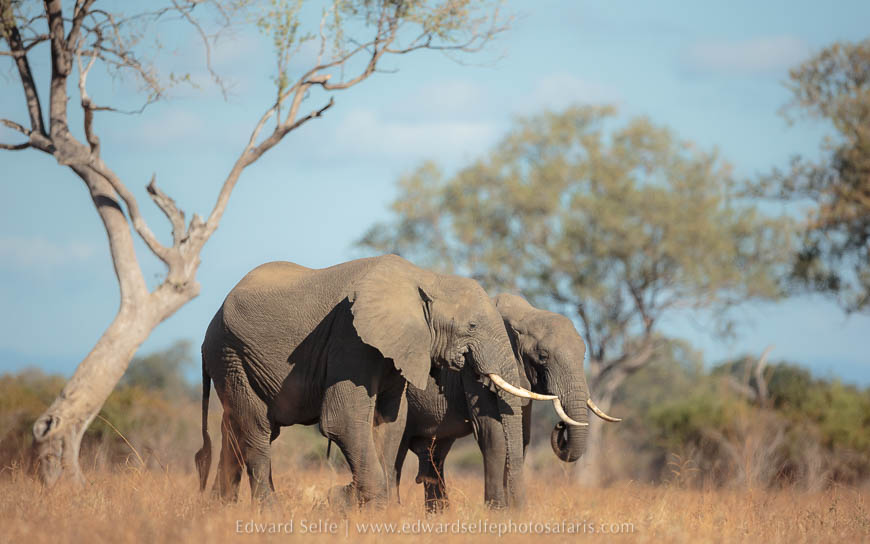
I was keen to catch up with some of the famous leopards of this area too, so we checked the Mwamba stream in the afternoon and found Luambe, who had been badly beaten-up by another leopard but is subsequently doing better. We waited until the sunset had almost gone behind before adding a spotlight to create this effect.
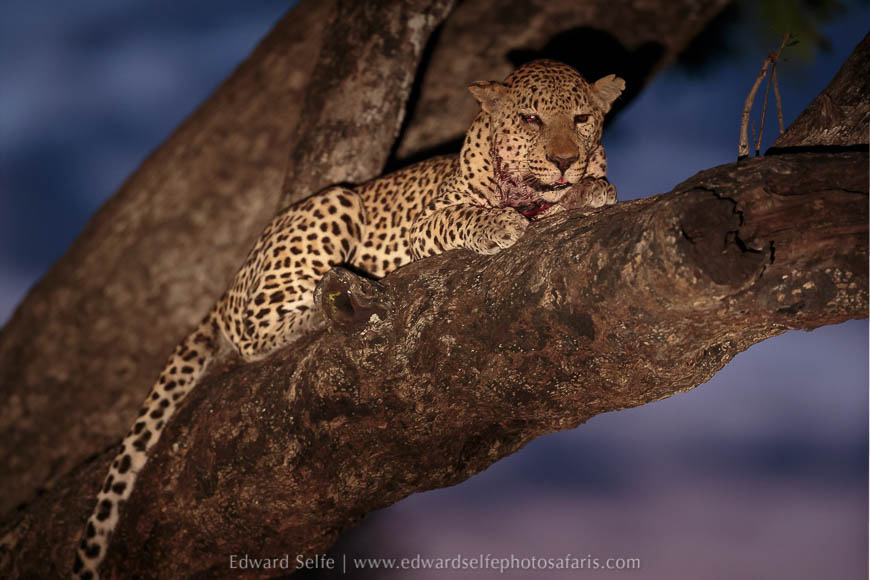
We heard lions all night, and quickly found 3 of 4 new young males who have been terrorising the area. Soon after we found the 4th, who was mating with a Hollywood Pride female – to compete the set. We spent quite some time with this group during the 4 days we were there.
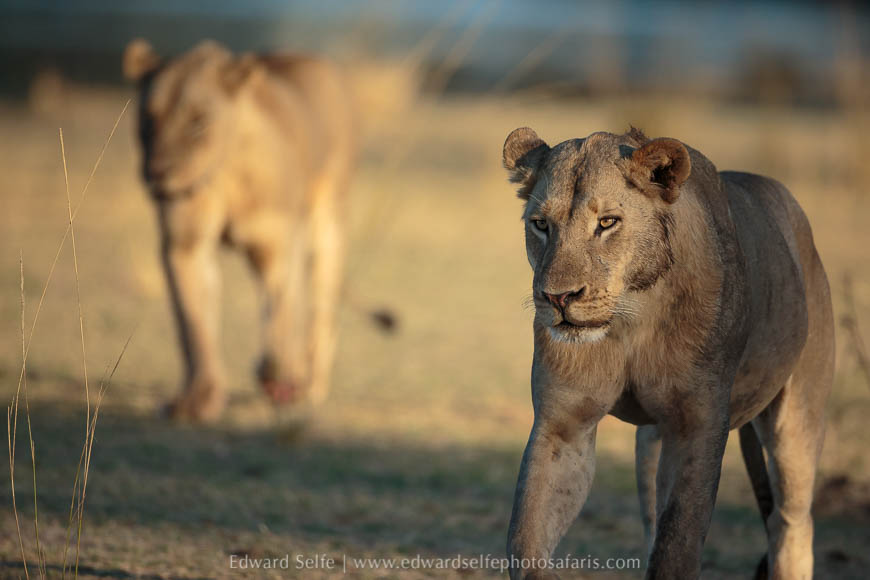
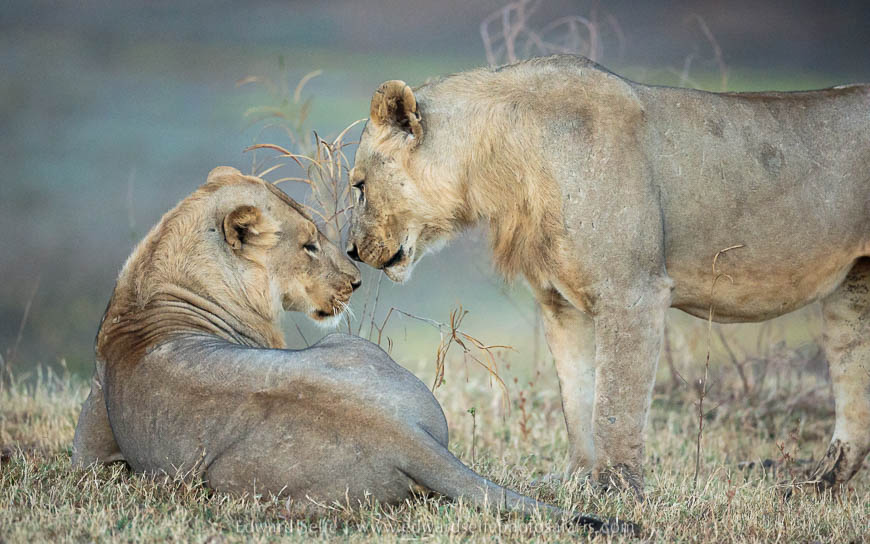
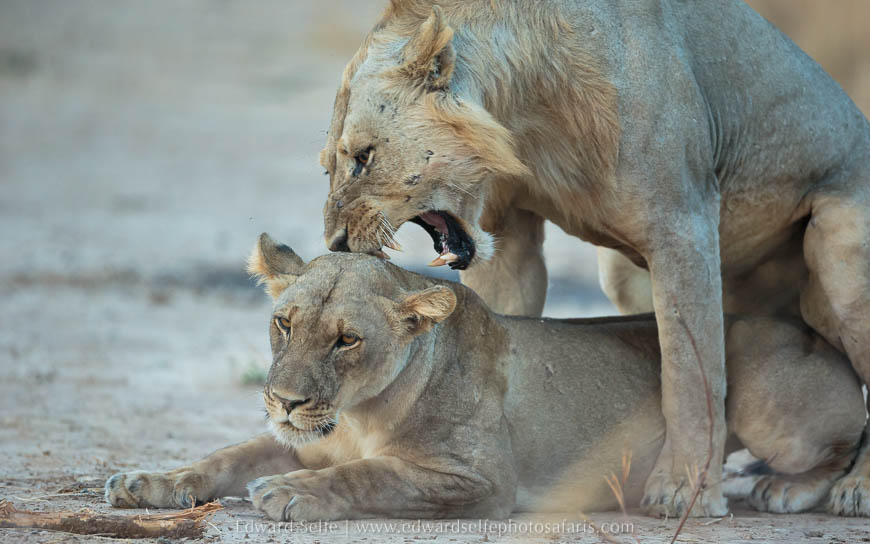
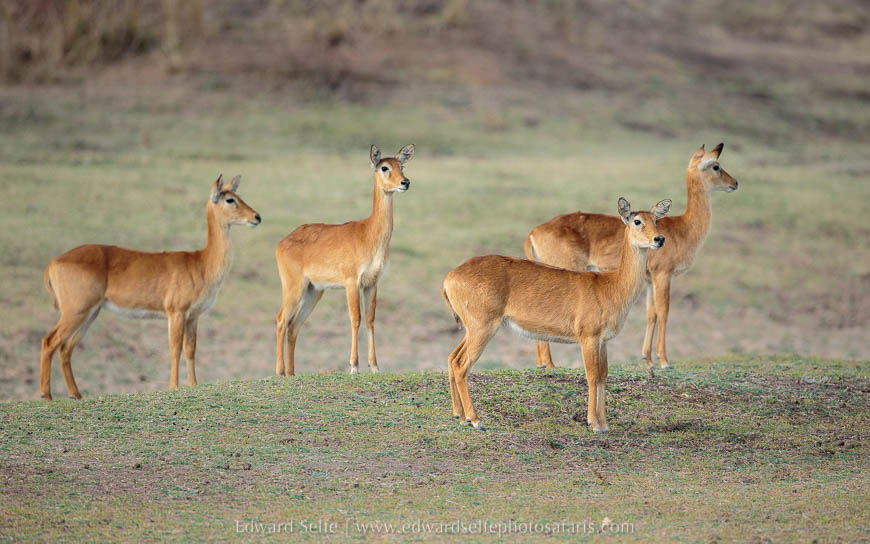
The rest of our time at Lion Camp was spent with different lion prides, and following Chipadzuwa, the grown-up cub of famous leopard Malaika. We had a wonderful elephant river crossing late one evening, and spent time with one of the “Punks”, a duo of male lions who have been dominant in recent years, practicing side-lighting with the spotlight from another vehicle.
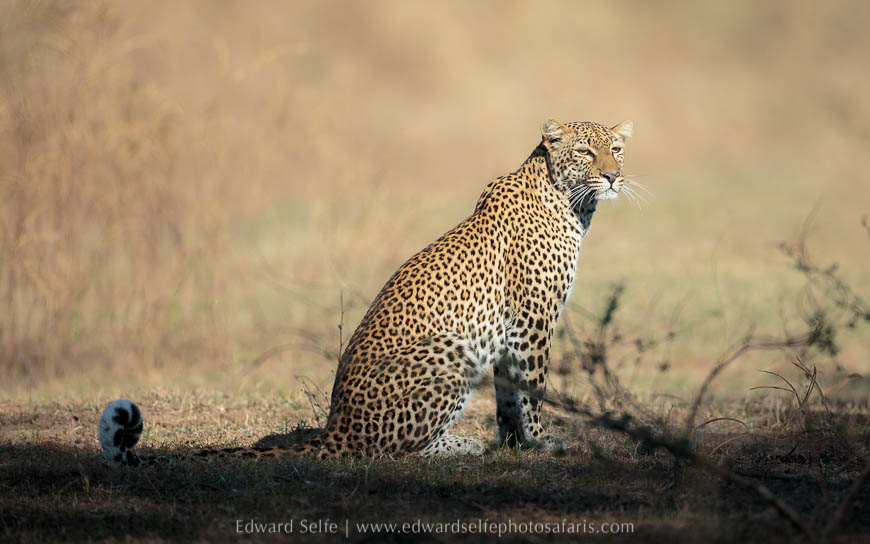
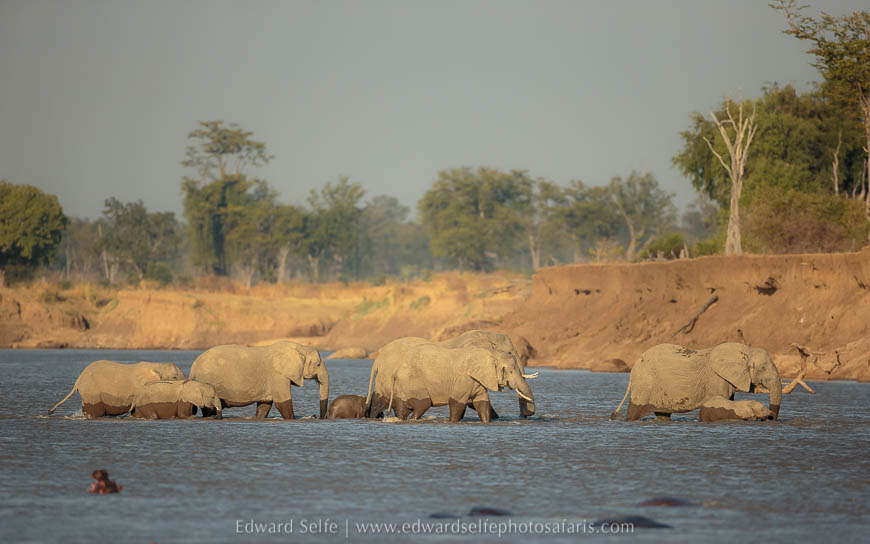
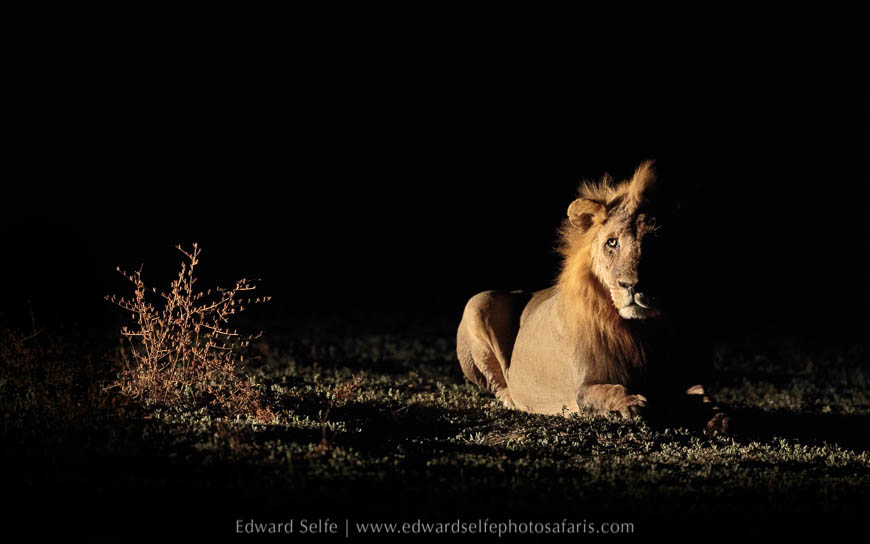
We also enjoyed great light along Fish Eagle lagoon with some antelopes (it’s not all about the big guys!) and followed a hunting leopard at a distance, enjoying observing her incredible ability to move quickly and silently through the bush.
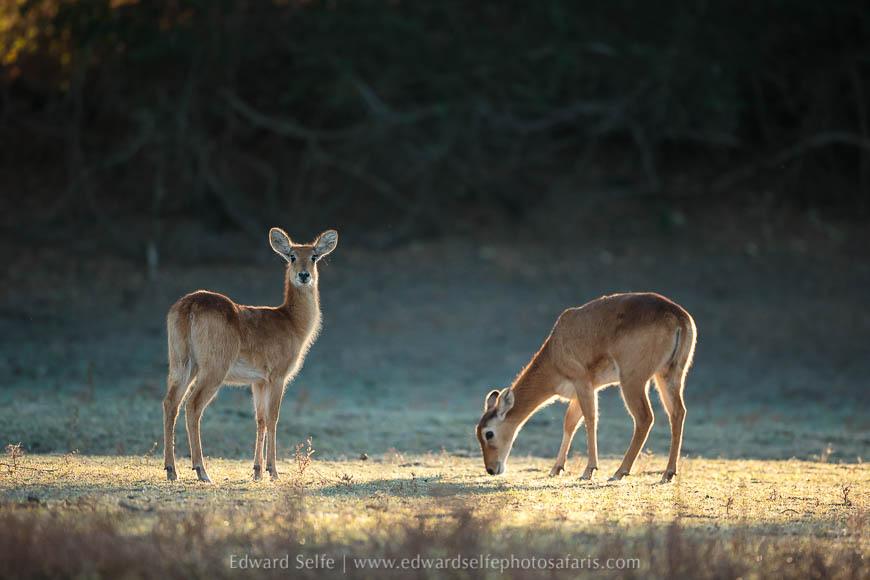
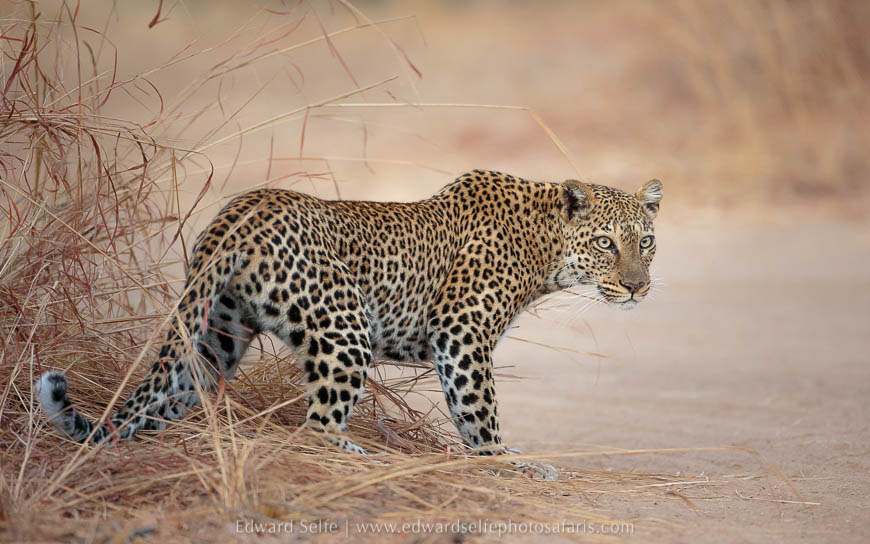
On our final morning, we were leaving Lion Camp when we came across a pack of 6 dogs. They were hunting so we followed them as best we could – they move very fast! – and found them when they had just made an impala kill. They fed voraciously, but carefully, very aware that nearby lions might well arrive and try to steal the carcass and kill the dogs. 3 of the dogs were missing but we hoped they were nearby…soon enough the remaining 3 arrived at speed to join the feast. We stayed with them when they had moved off from the kill and spent 30 minutes watching them playing and interacting in the middle of Lion Plain. This was a wonderful and fitting end to 4 nights at Lion Camp!
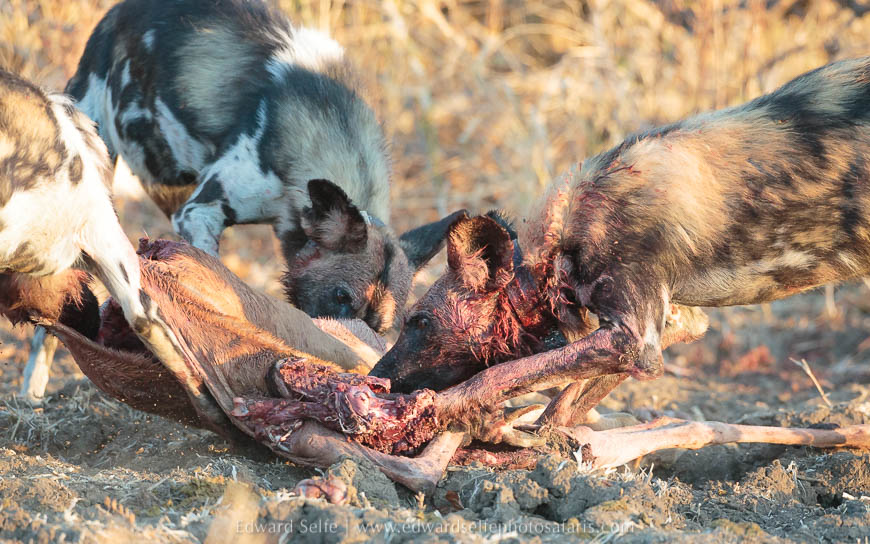
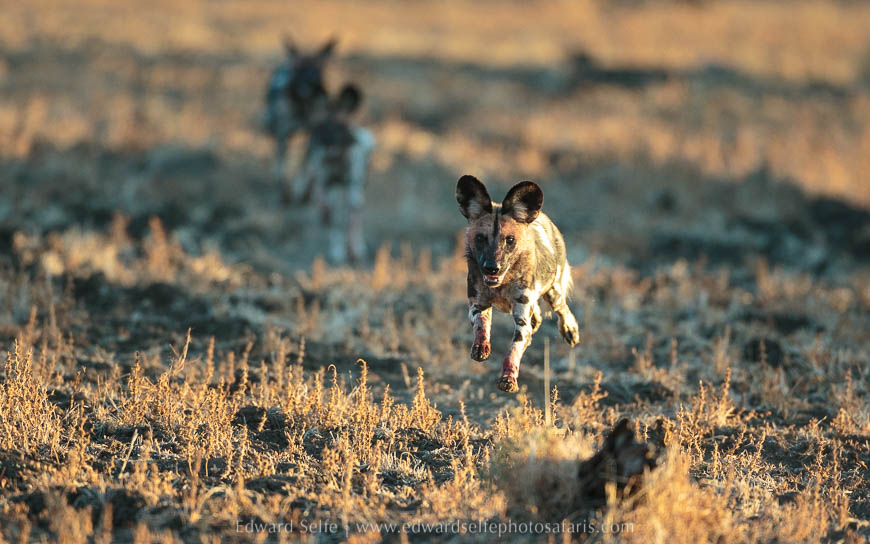
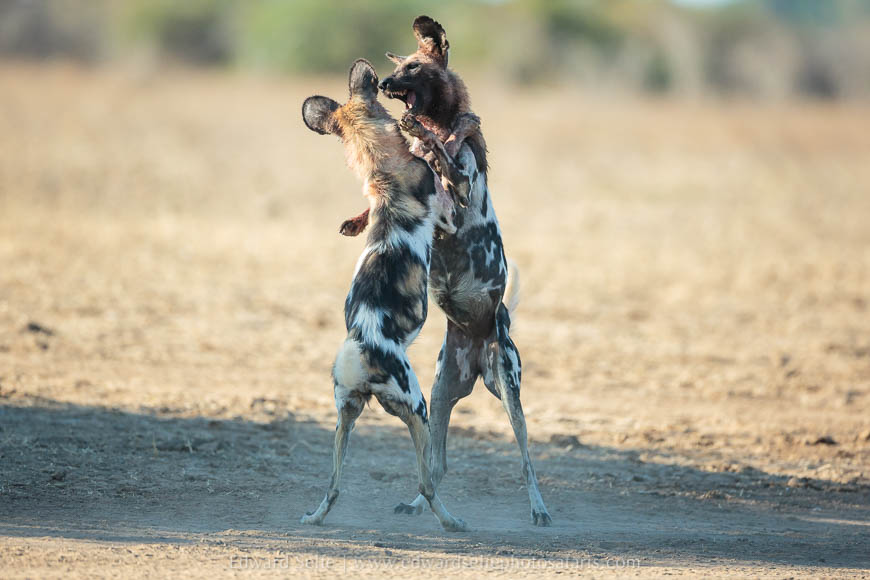
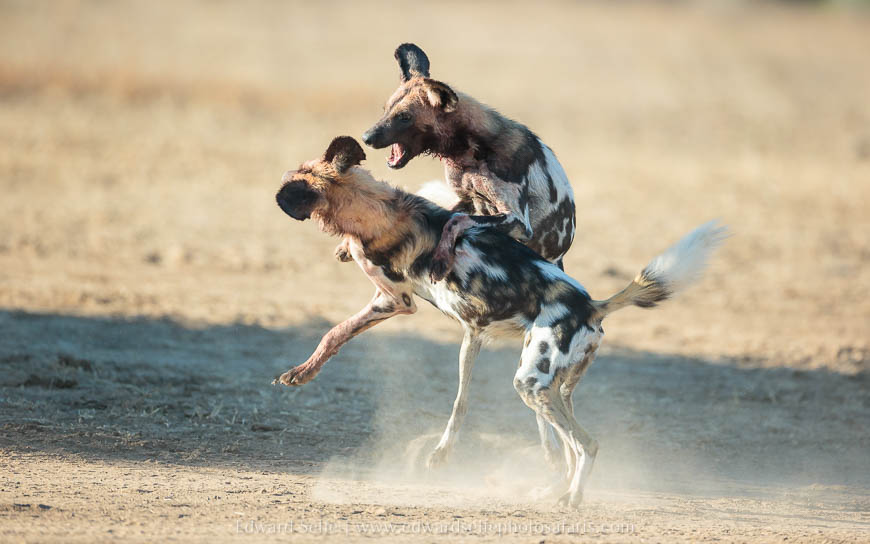
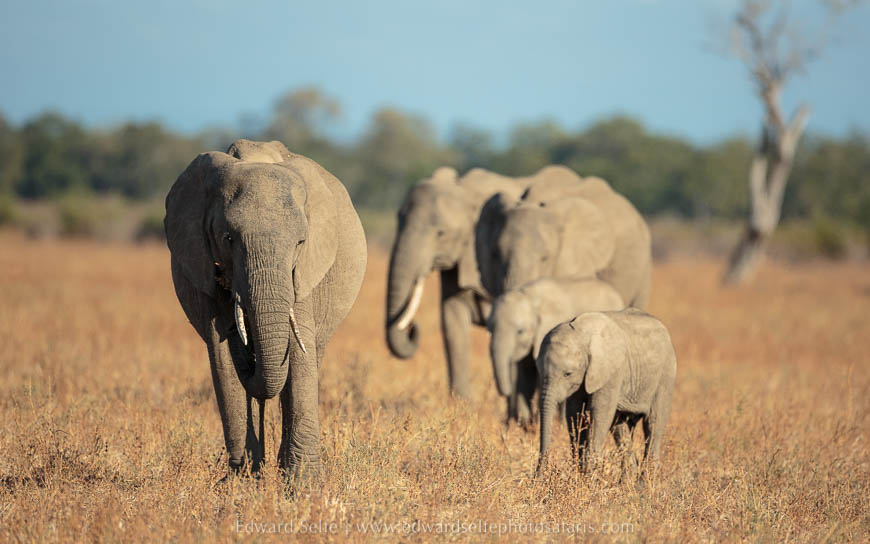
Even before we arrived at Chindeni, I knew that we would have a great time there. On the way down to the camp, we saw lots of game, and enjoyed watching as we approached the Nchindeni Hills that form the backdrop to everything in that area of the park. Just after passing Chamilandu Camp – where we would return later – we saw a couple of elephants crossing through the river which looked beautiful against the hills on the other side.
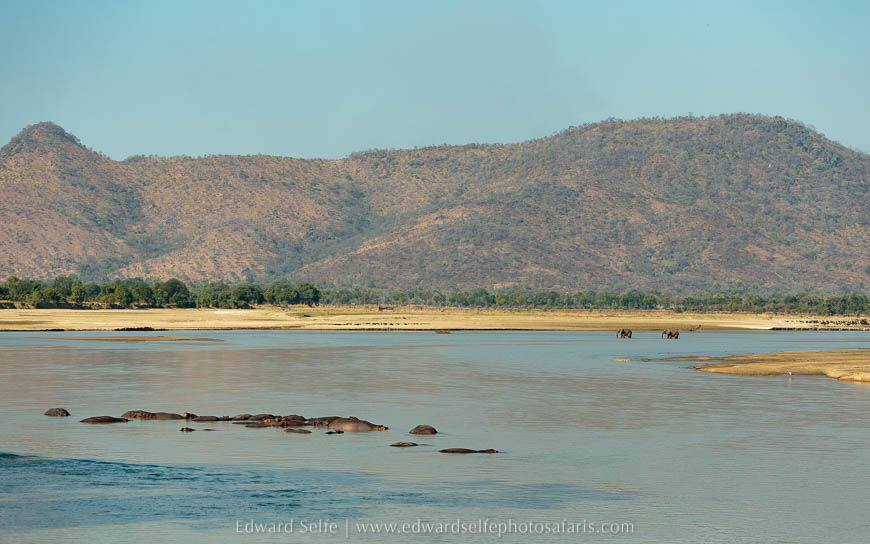
We arrived late at Chindeni so had only time for a short afternoon drive. However, we enjoyed photographing guinea fowl against the light on the floodplain near the camp and drove among a small herd of buffalo at last light. The area was heavy with game and promises for the coming days.
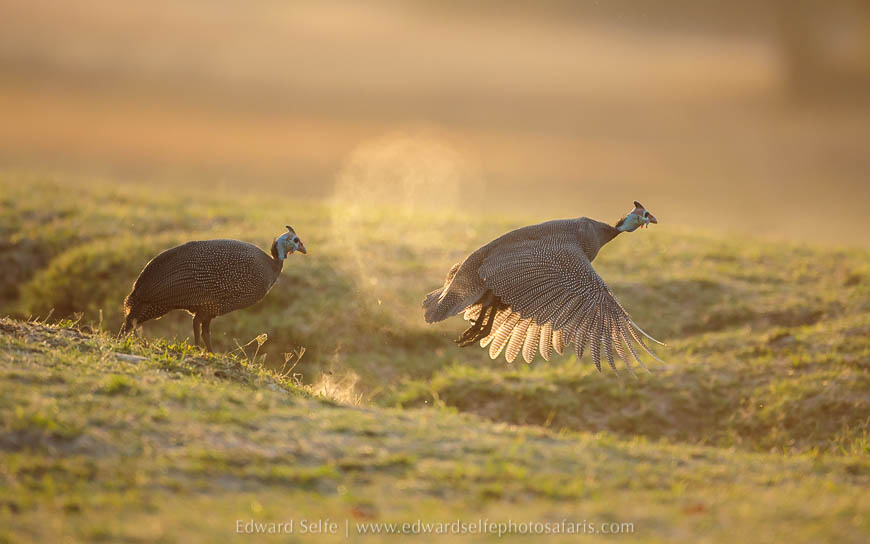
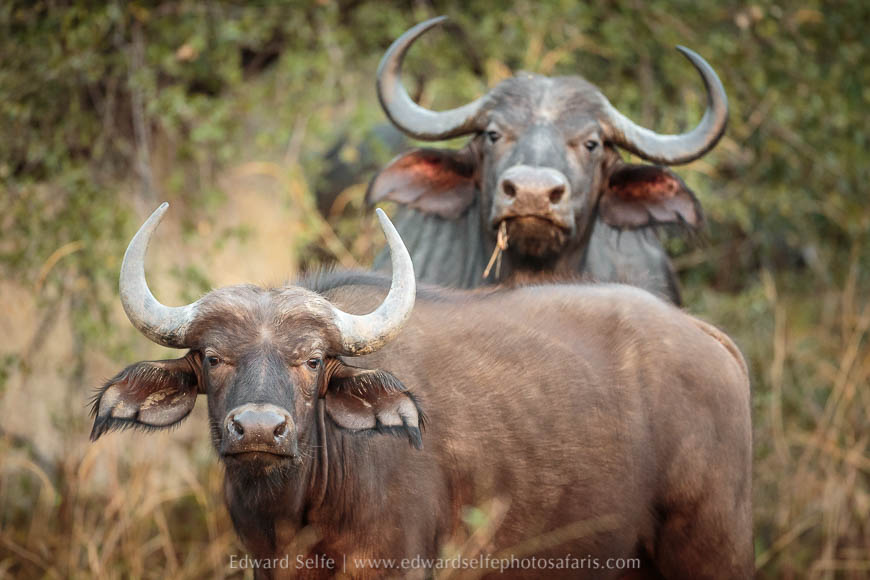
The following morning, we heard alarm calls from the deck while having breakfast. As the light increased, we could see the Chamilandu Pride of 14 with two young cubs crossing the dry plain at the top end of the lagoon. We found them in the mopane woodland, and we enjoyed watching them settling down for the day and planned to return in the afternoon. During the rest of the morning, we photographed giraffes in the woodland, and came across a large male lion who was hiding in the bushes with his freshly killed hippo calf carcass.
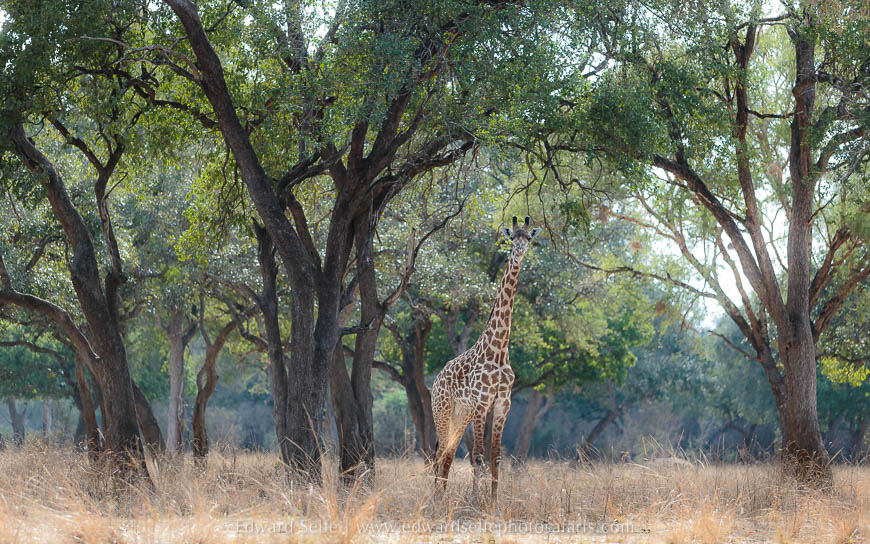
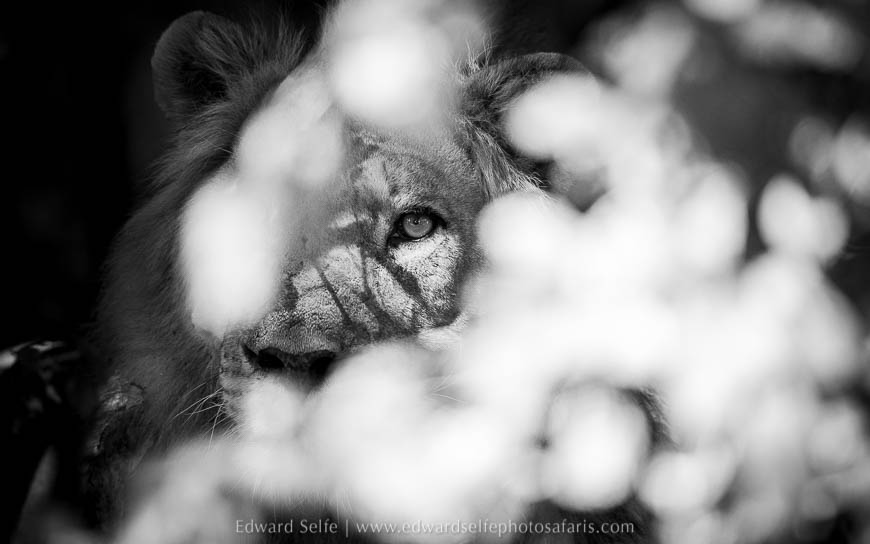
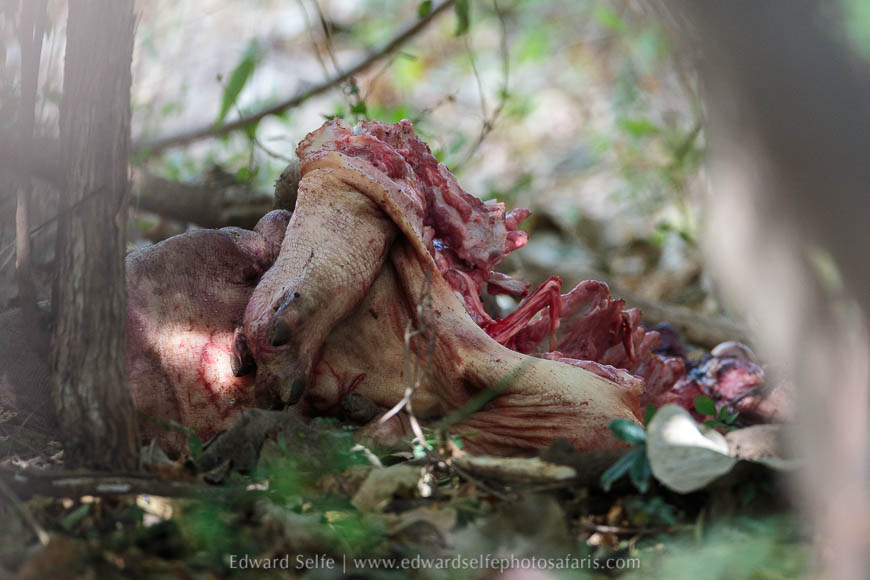
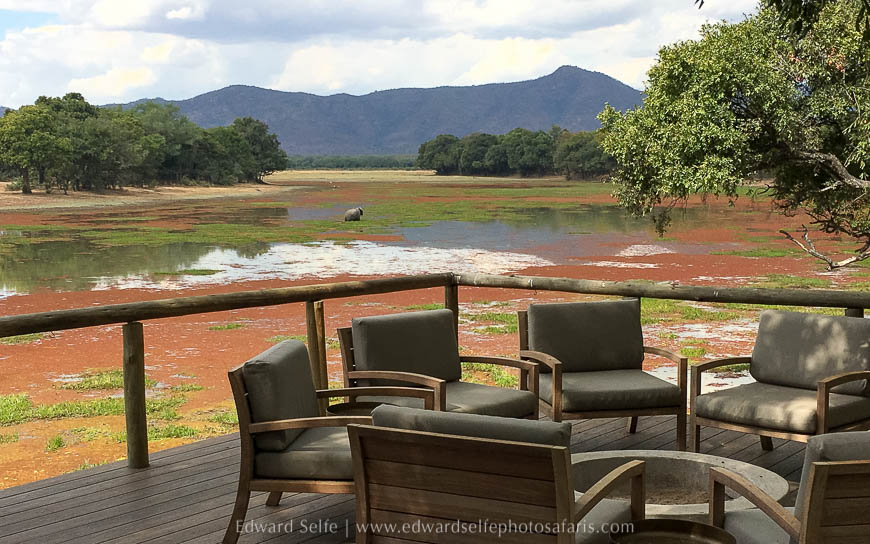
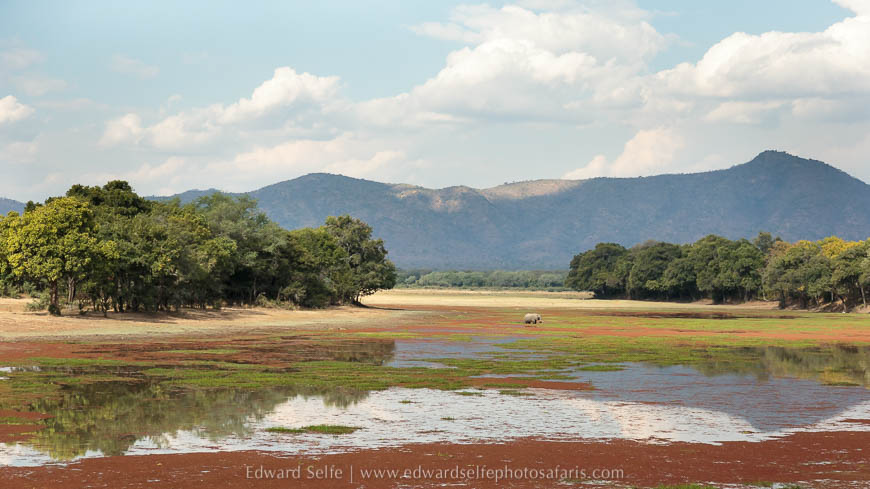
The afternoon could barely have worked out better. During the day, two herds of buffalo had moved into the area of the lions, and the lions seemed active quite early in the afternoon. We spent an hour watching the cubs playing with the adults and feeding from their mother, and then sensed the mood change as one senior female called the pride to start hunting. 14 low-slung lions passed by our vehicle and headed to the open area along the lagoon. We knew we were in for a spectacle.
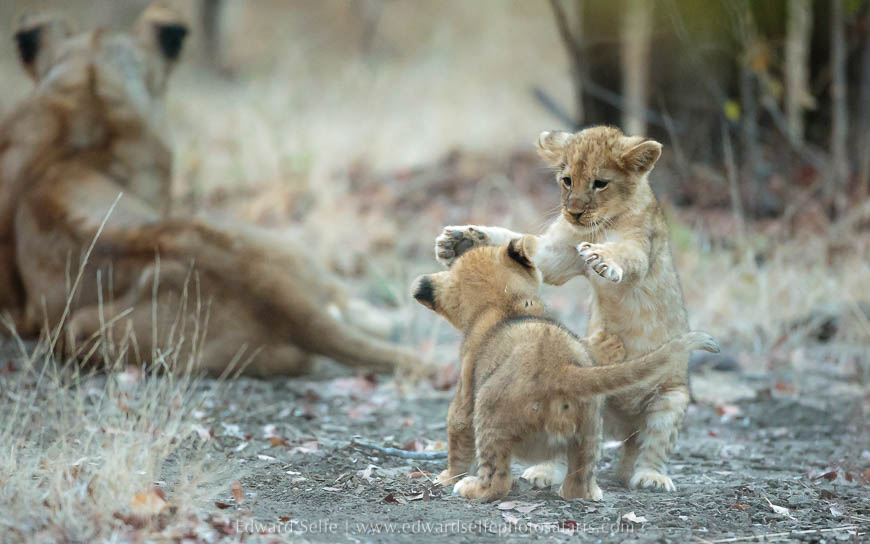
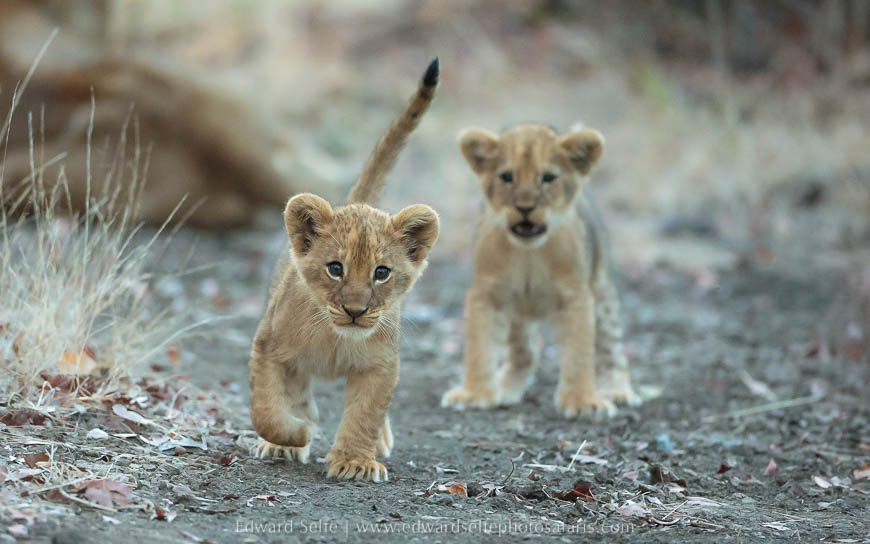
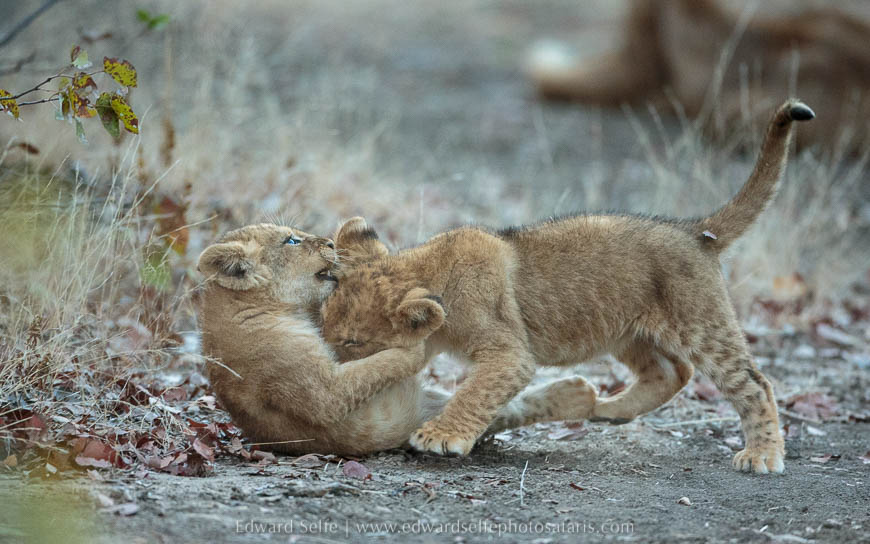
We drove around and met the pride as they emerged from the woodland and right into the path of several hundred buffalo. Almost immediately, we could see the lionesses spreading out, encircling the herd. The lions charged into the herd, scattering buffalo everywhere. But the buffalo quickly reformed and chased the lions back in to the scrub, forcing several of them up onto a termite mound! The sound of bellowing buffalo and snarling lions, combined with the dust of hundreds of feet was quite something to see! Only much later did the lions emerge from the scrub and start to follow the herd, by which time it was late and time to return to camp. We would find out what happened in the morning!
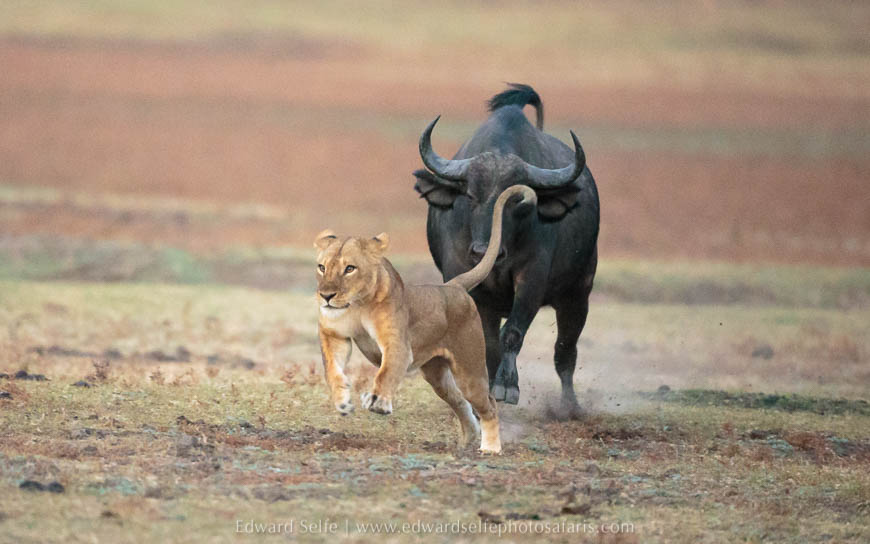
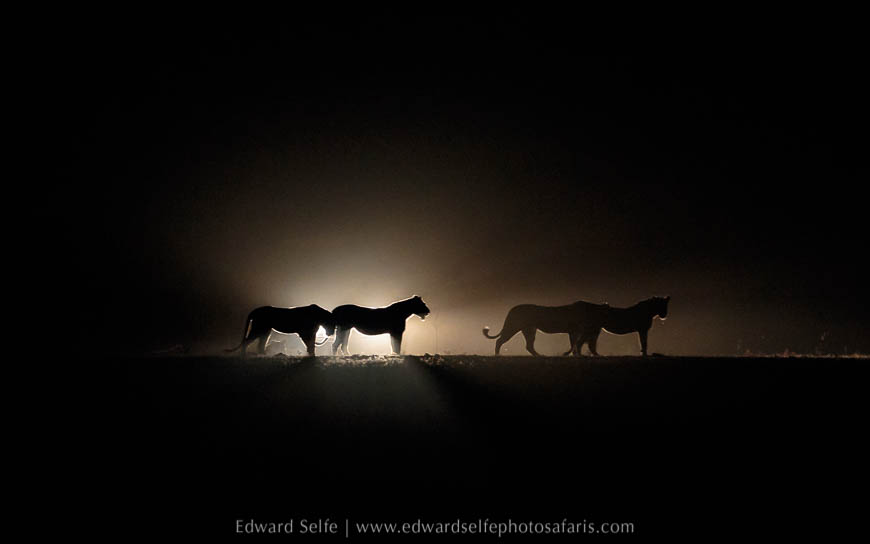
We searched for the lions the following morning and eventually tracked them by their snarling noises to a thick bush where they had killed a warthog just a few moments before. This gave us few opportunities for photos, but it was interesting to see how the females competed over the small carcass and how it was eventually pulled apart and each lioness moved off with her own share of the meat.
We searched a different area in the afternoon and found an impala carcass in a tree. Knowing that a leopard and her cub had been seen in that area the previous night, we returned later and found them in the tree, feeding on the carcass! This was wonderful as we’d not seen leopard with a kill in the tree yet, so we spent the next two hours with them, crossing fingers that they would not drop the carcass to the waiting hyaenas below.
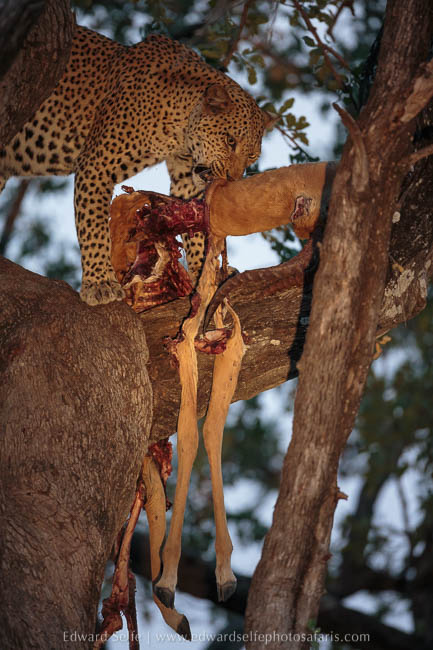
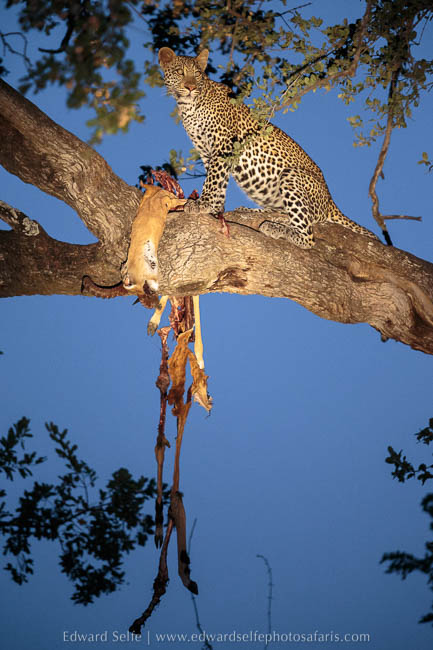
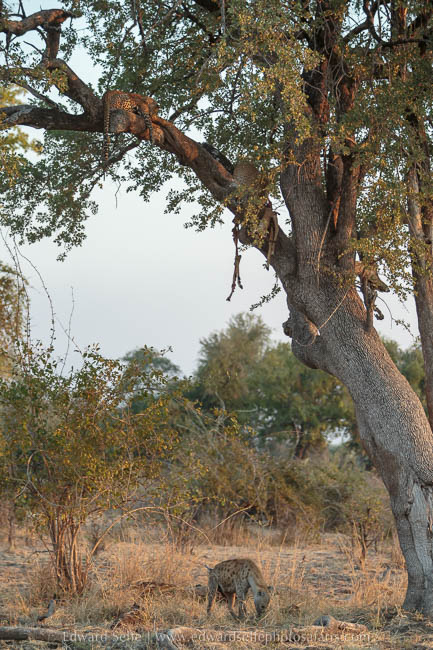
That was the end of our time at Chindeni, so we packed up and prepared to move to Chamilandu, our final camp. This camp is well known for having a huge number of elephants in the area, so we had high hopes of large herds set against the backdrop of the stunning hills. Our first afternoon gave us just this, with several herds crossing the floodplains and some with very small calves in tow.
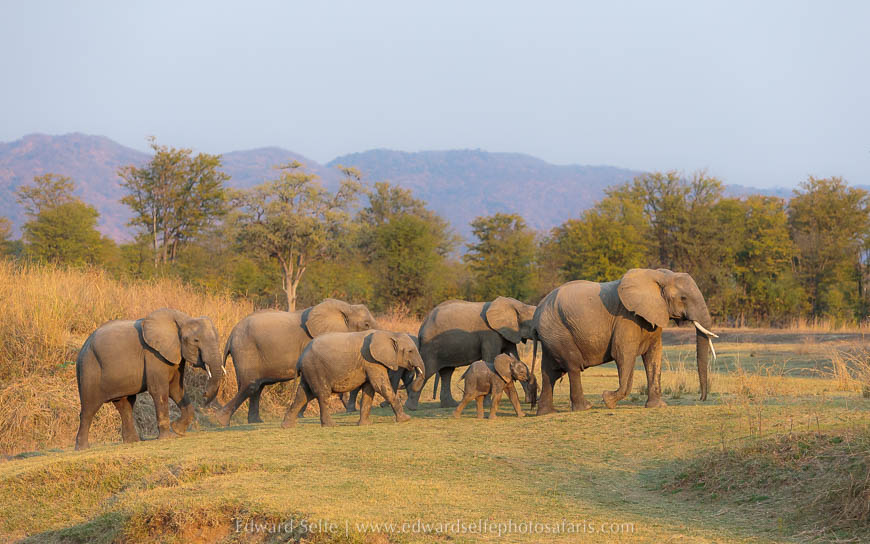
Early the following morning – our final day – we found a sub-adult male leopard patrolling his territory. Suddenly he stopped and raised his head, sniffing around. He tracked the smell to a nearby sausage tree where the carcass of a young puku had been stashed! We were very excited to see this and quickly made our way to the tree. He began to feed but immediately we heard nearby leopard calls which confirmed our suspicions: this leopard had stolen the kill from another leopard. We waited, hoping that there might be a conflict between two leopards, but the second one never appeared. The call sounded like a female’s so I suspected that she would not challenge him anyway. We moved off, to let the situation settle, and returned after half an hour to find two leopards near the base of the same tree, with the male above them. It seemed that a female had made the kill and was sharing it with her juvenile son, but that the male had caught the scent and moved in! The female and cub had no choice but to move off! In a trip of epic sightings, this amazing encounter just blended with many other encounters, so we took fewer photos and watched the cats’ behaviour and tried to work out what might happen next!
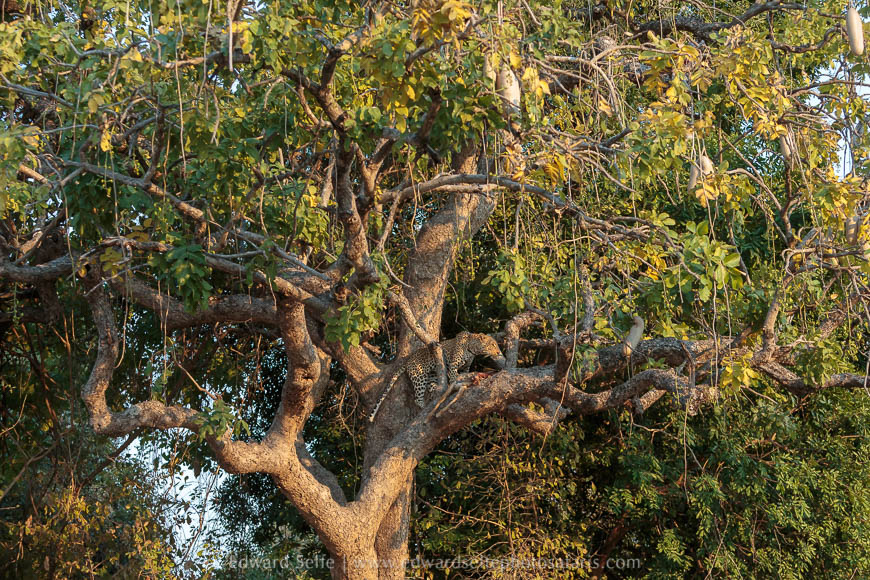
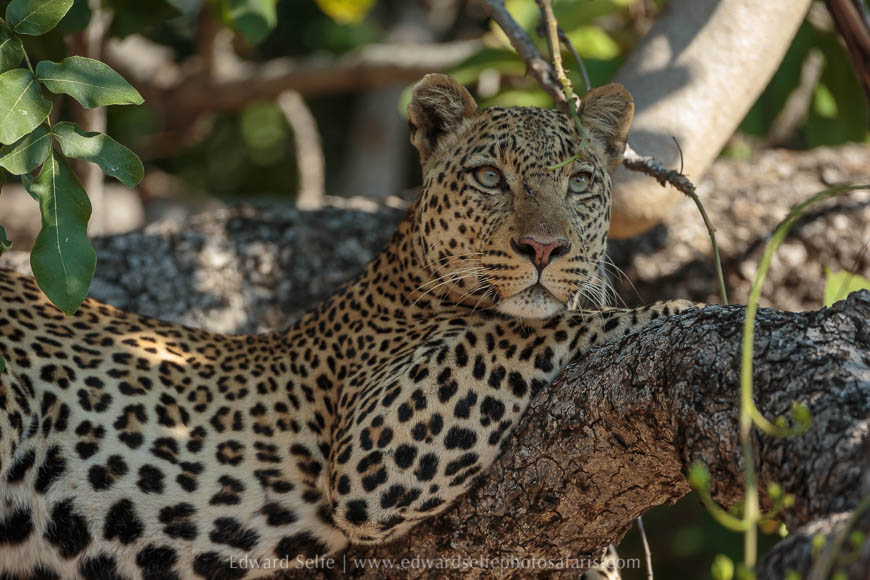
We returned in the afternoon, hoping to shoot the male leopard’s descent from the tree, but he remained where he was so we moved off to have a break and watch the sunset. As we approached the river, a herd of elephants crossed from the far side and tracked across the sand with the hills behind them. This, we concluded, was a fitting finale to what had been truly extraordinary trip!
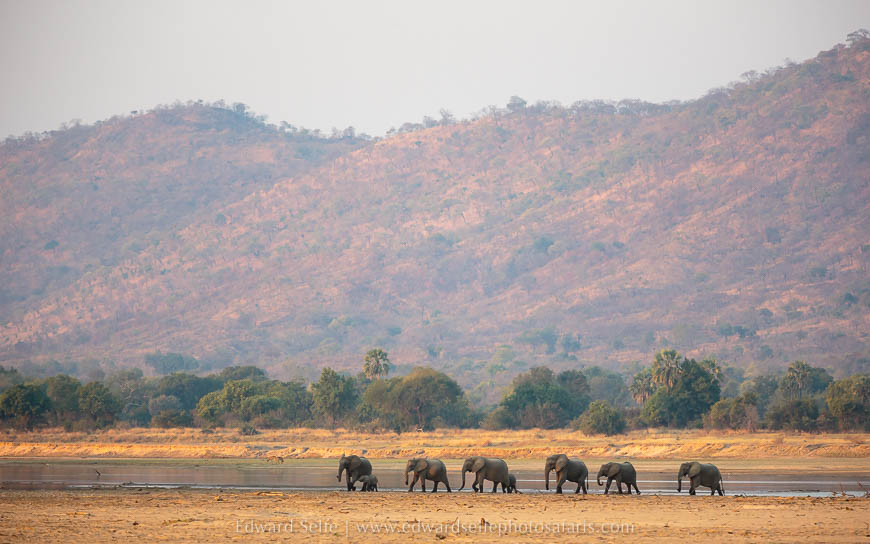
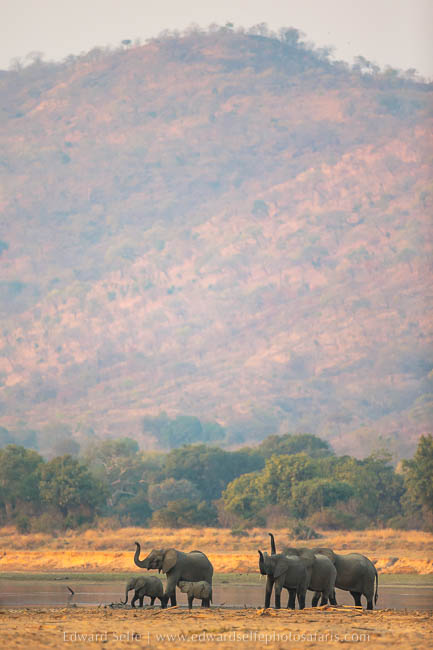
I had a very enjoyable and rewarding time with Mark, Lynne, Don & Kathy. We laughed a lot, helped each other out and shared wonderful stories and jokes. For me it was particularly gratifying to see the improvement in their photo skills from start to finish, and to see them capturing excellent images of action in challenging circumstances. I know that they will be keen to show their images so I hope I’ll be able to host a report from them on this blog…once they have sorted through thousands of images and selected the best!
So there you have it! Quite a trip! Were we particularly lucky during these two weeks? Undoubtedly luck plays some part of it, but we also make our own luck in the bush. We left camp early each morning, not dwelling over coffee and croissants, and we embraced whatever the bush gave us, whether that was giraffes, rollers and impalas, or leopard kills, hunting dogs and crocodile drama. By doing so, we stopped regularly, spent time on sightings waiting for events to unfold and therefore heard the tell-tale sounds of far off warning calls that lead us to the headline sightings. We also spent a total of 9 – 10 hours per day in the bush for 14 days straight, which ensures wonderful experiences.
The four of them are already considering a return trip, along with a safari with me in Botswana in 2020, so I suspect that there will be more from them in the future. I really hope so as they are a pleasure to guide and bring some good luck with them too!

